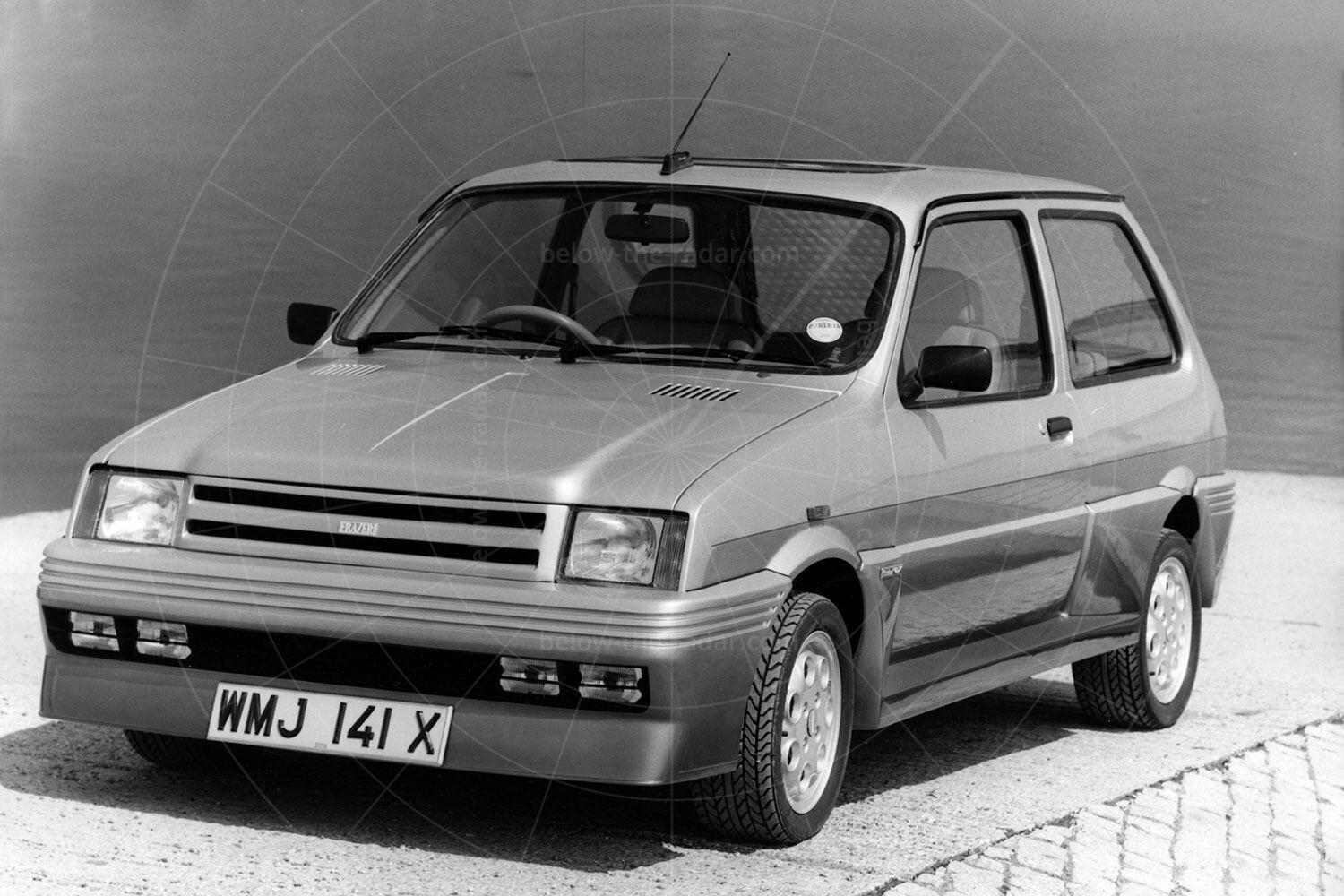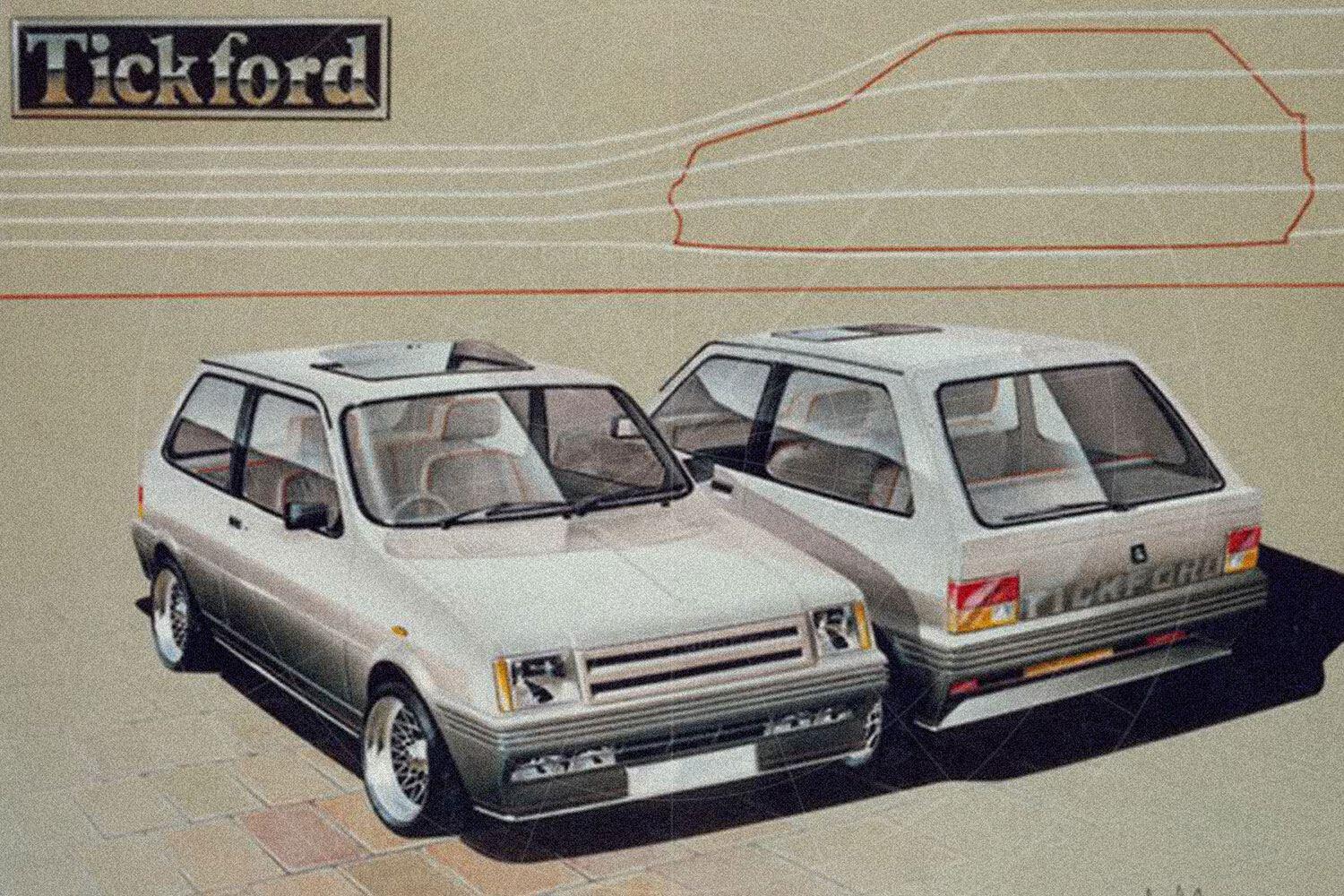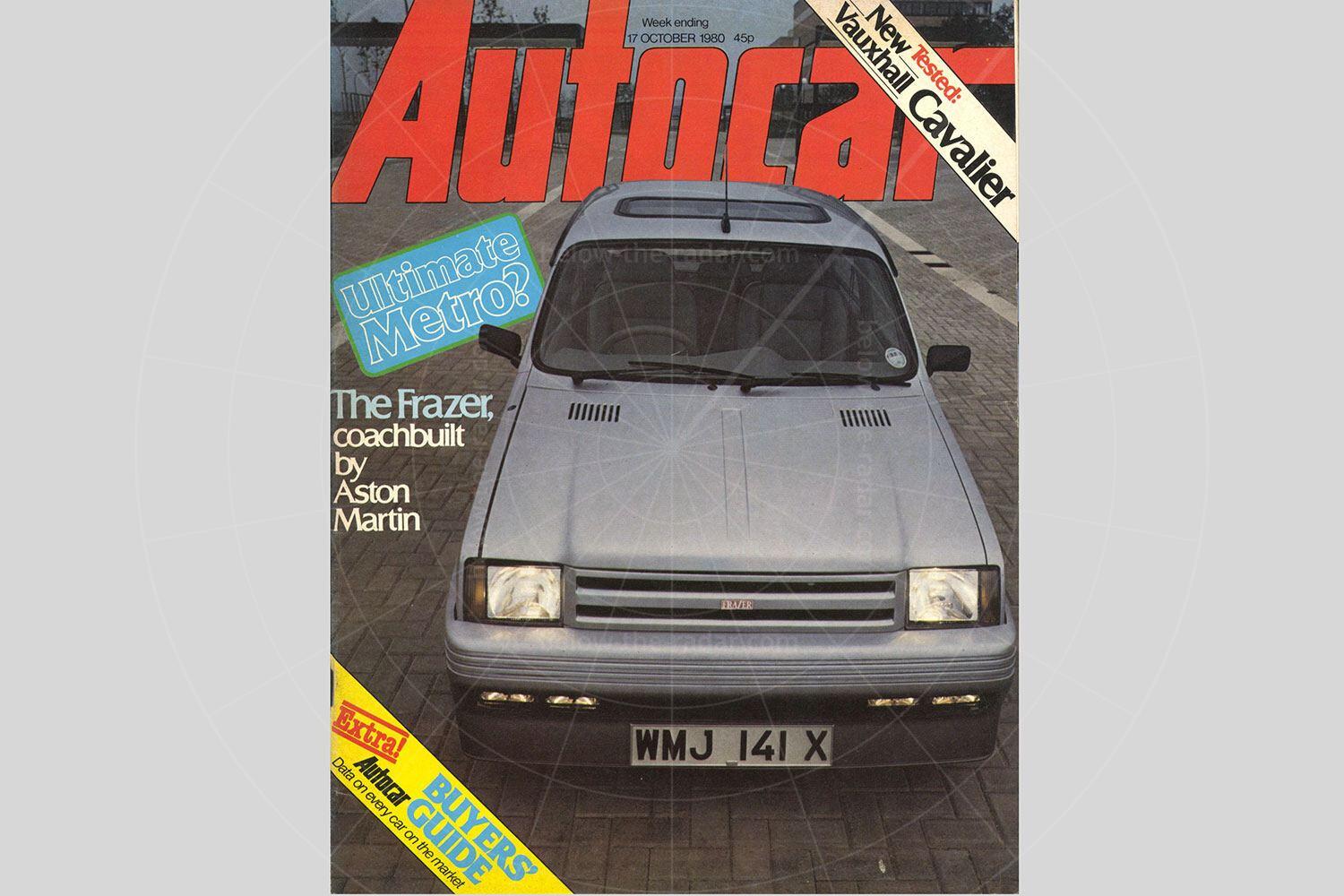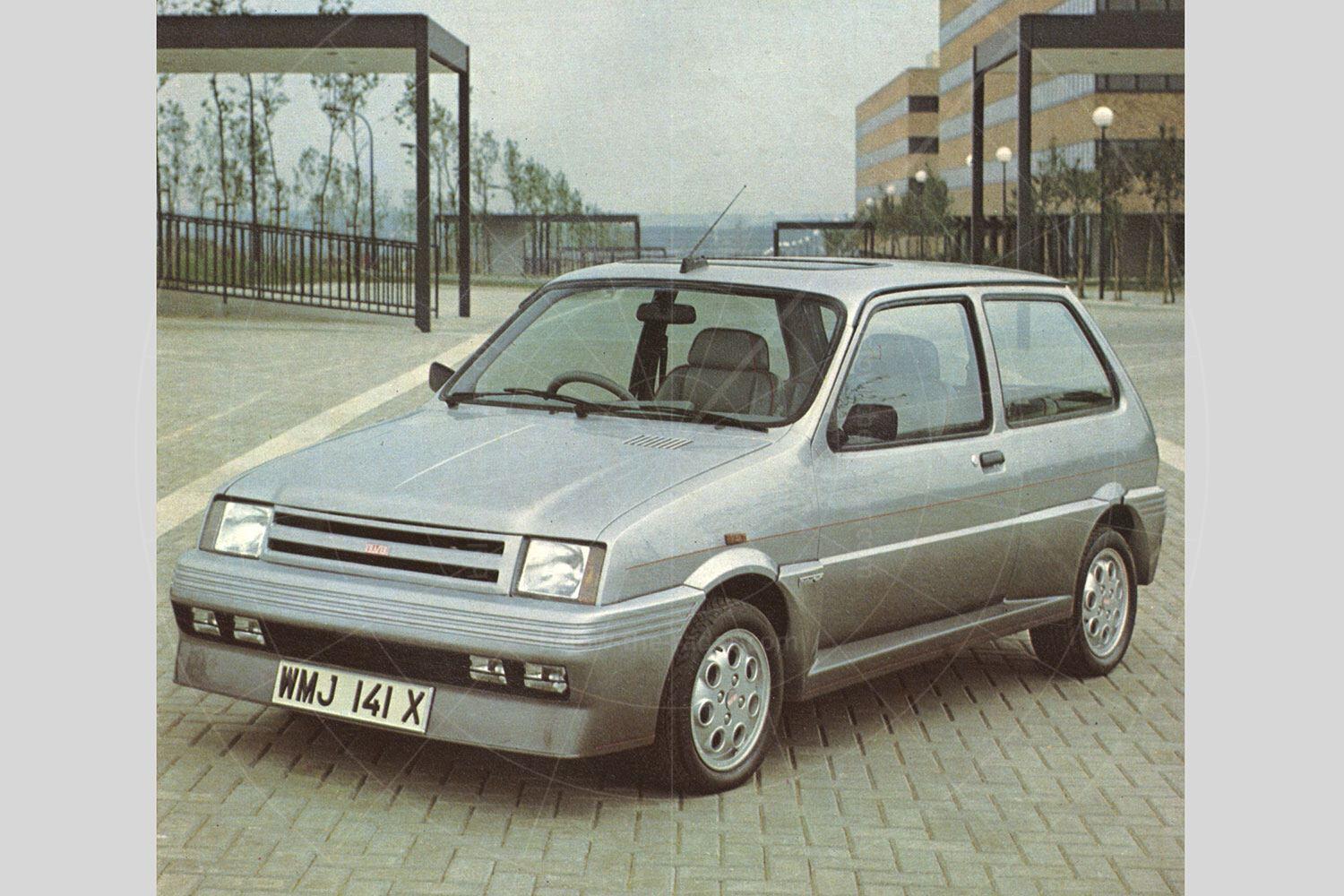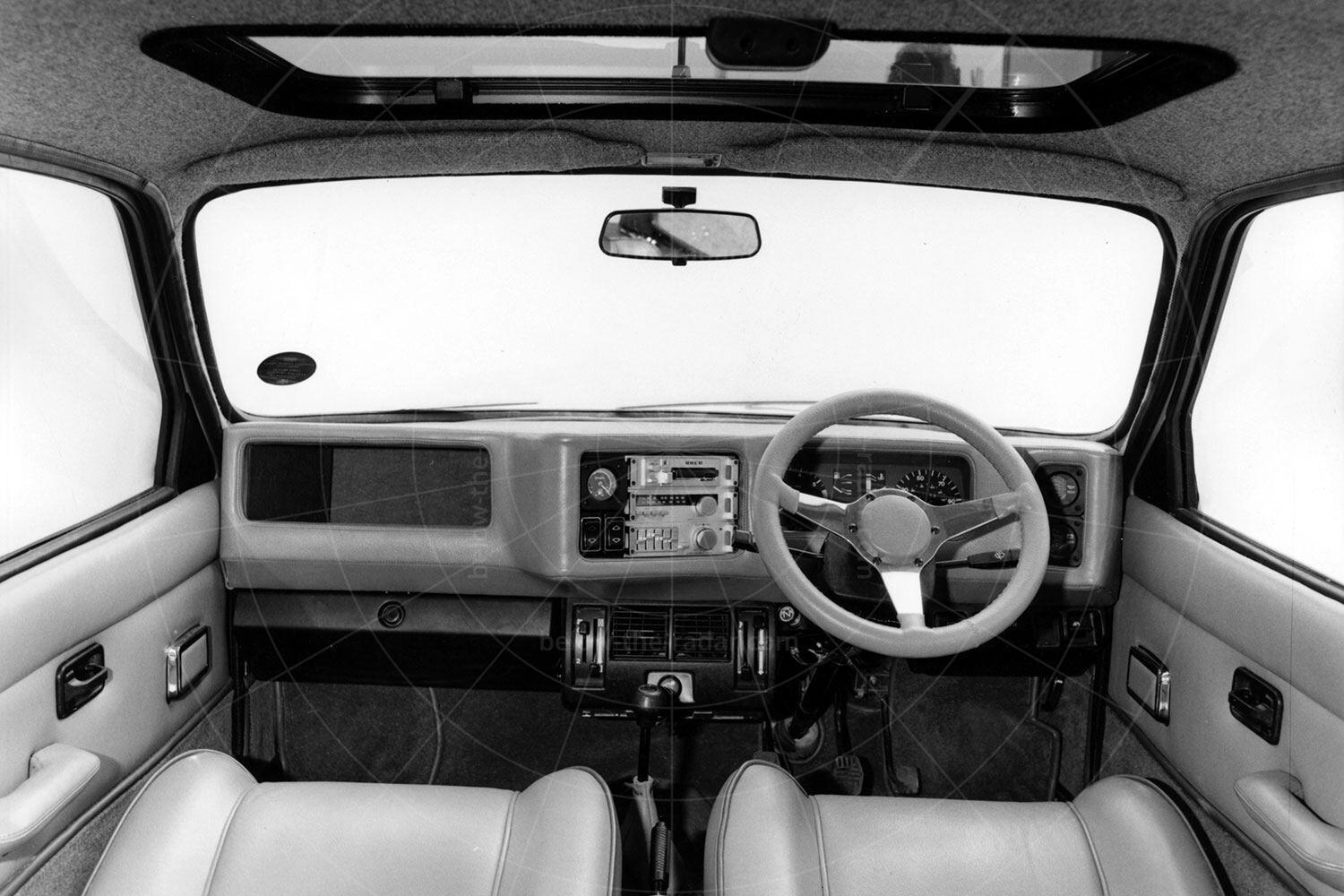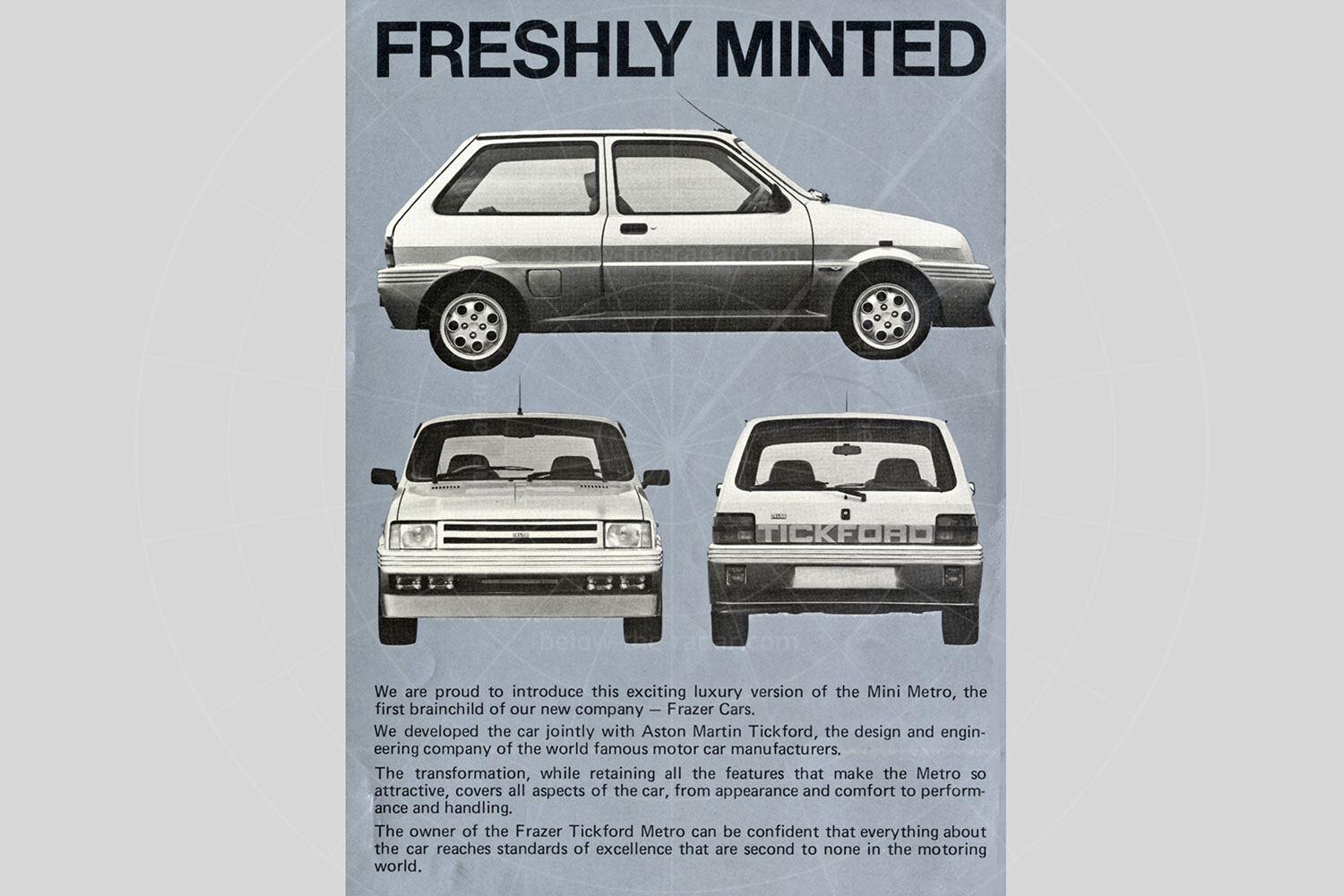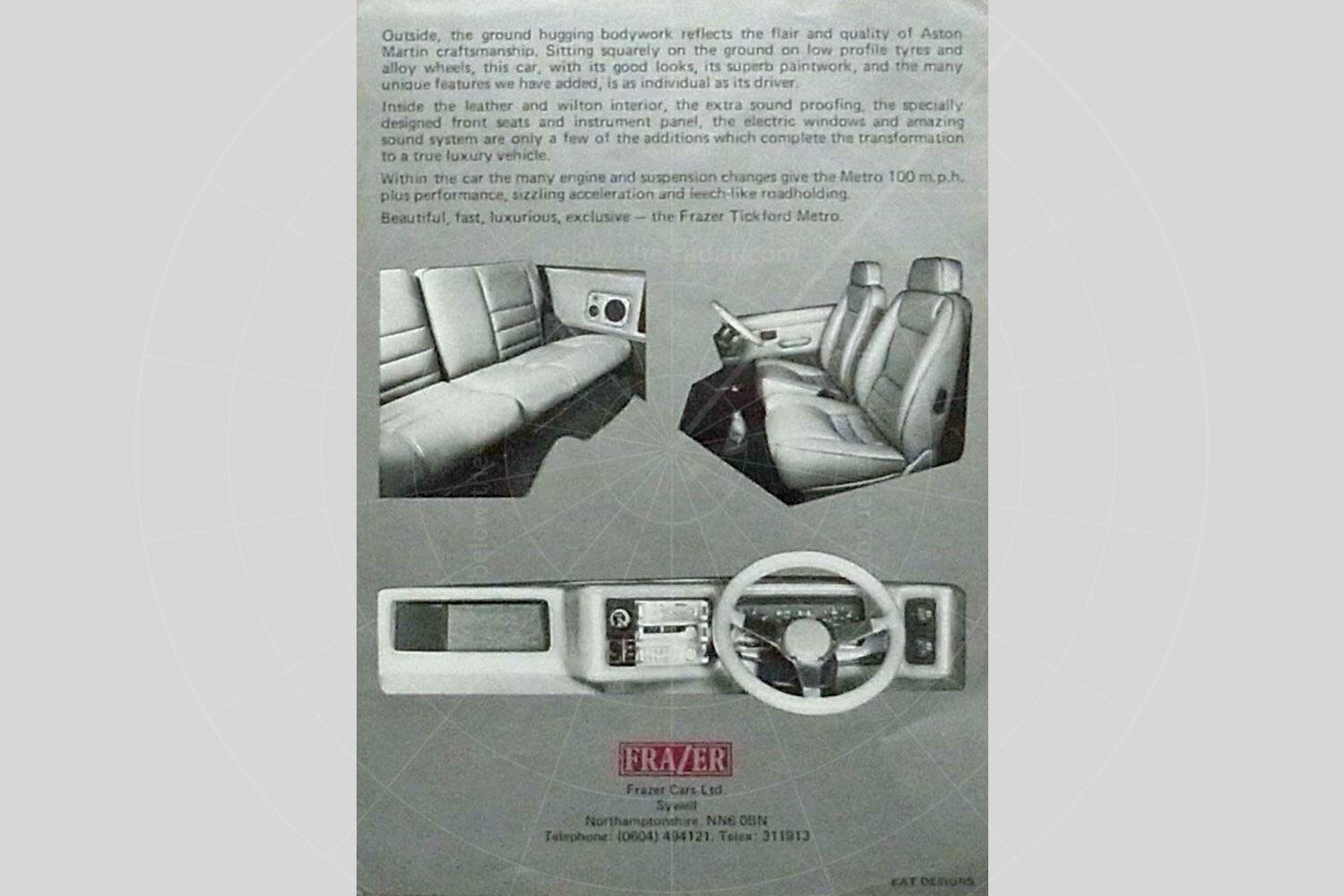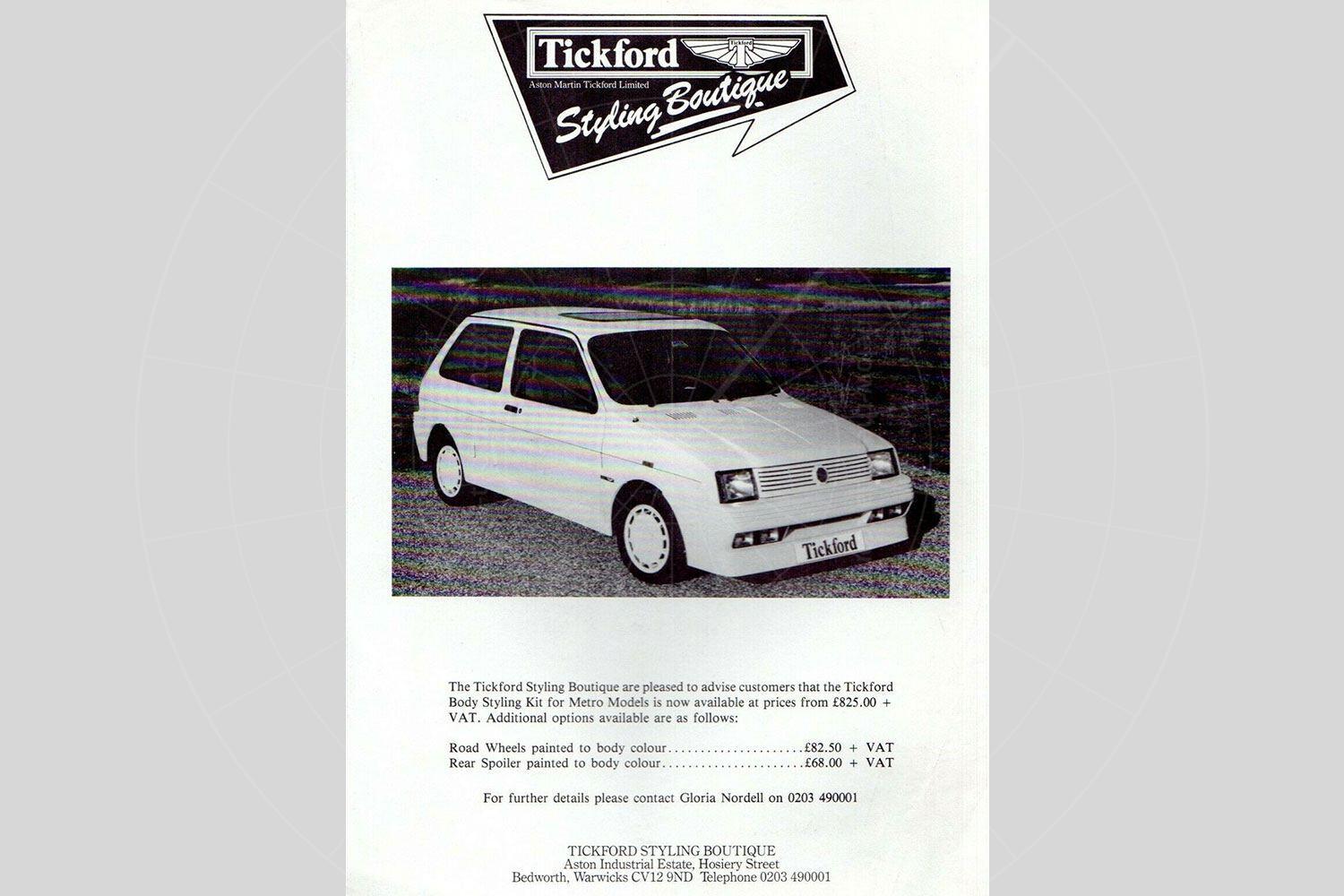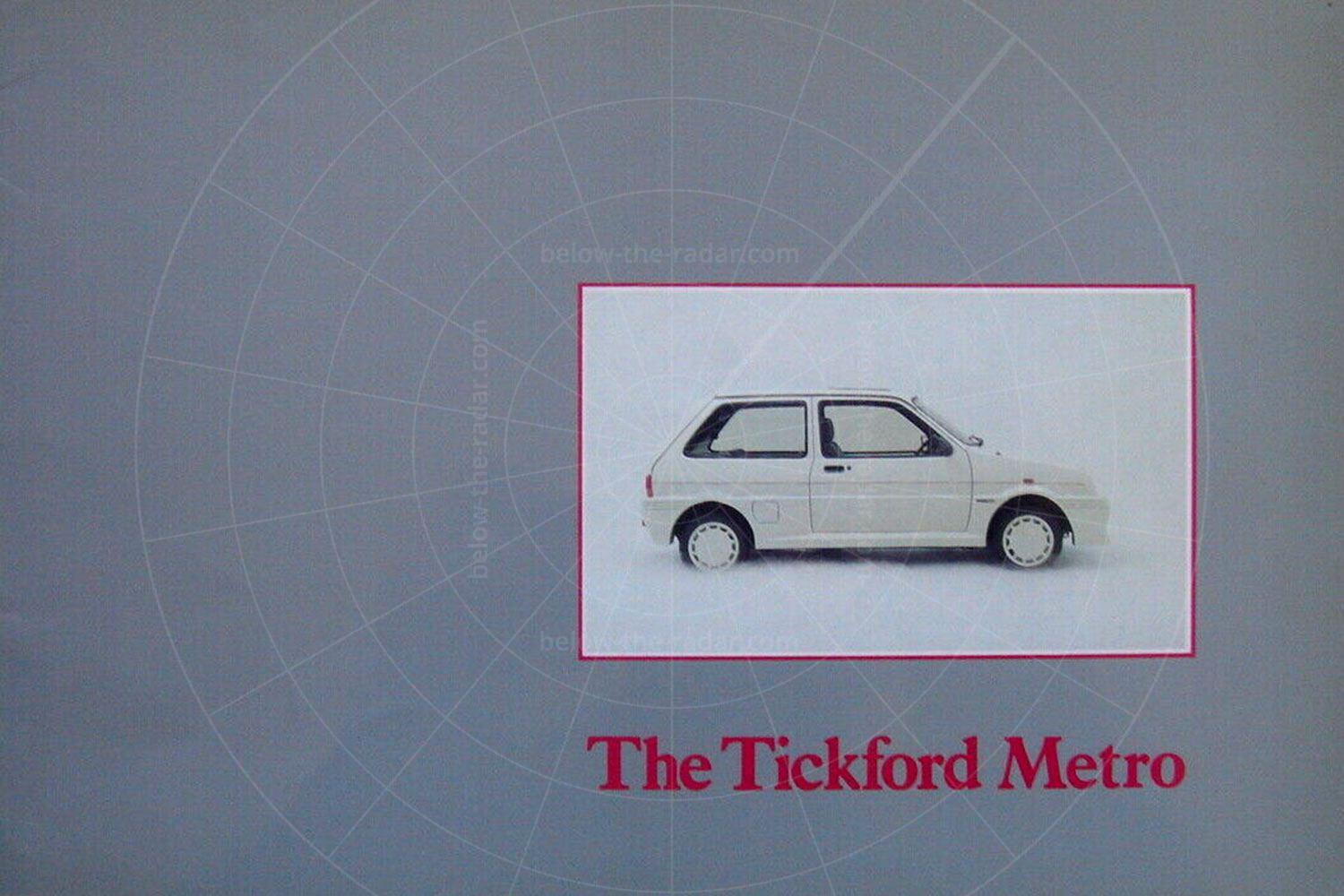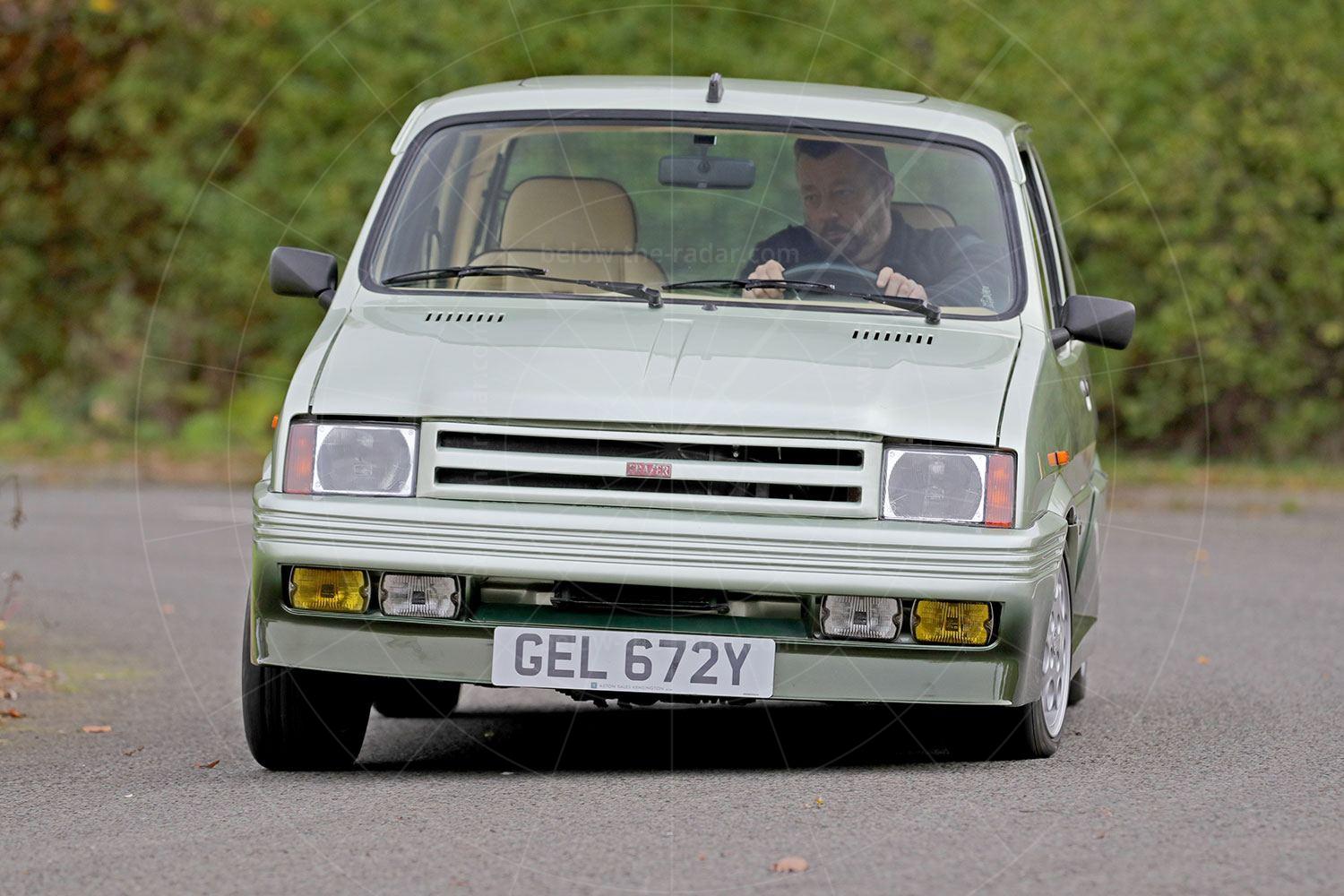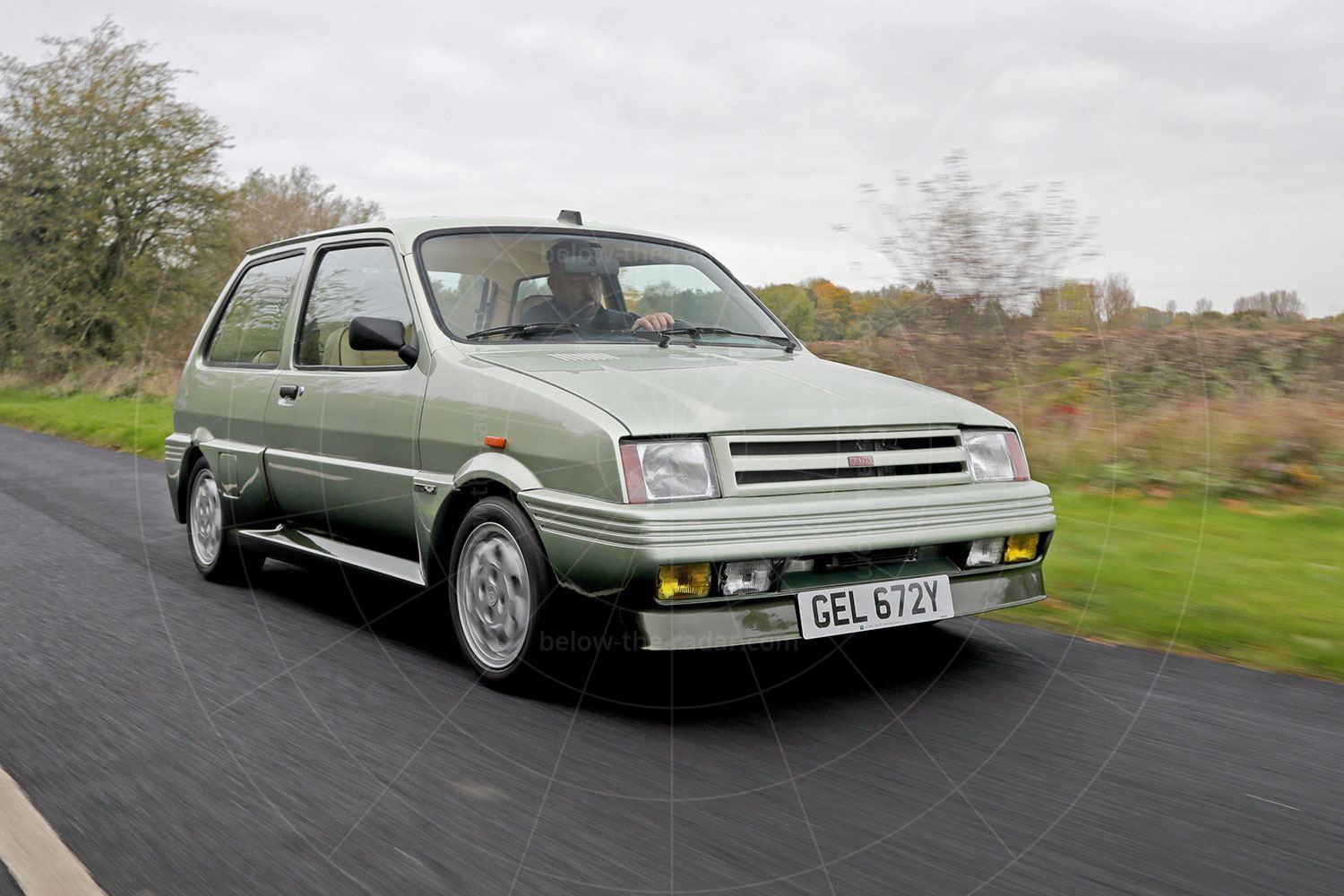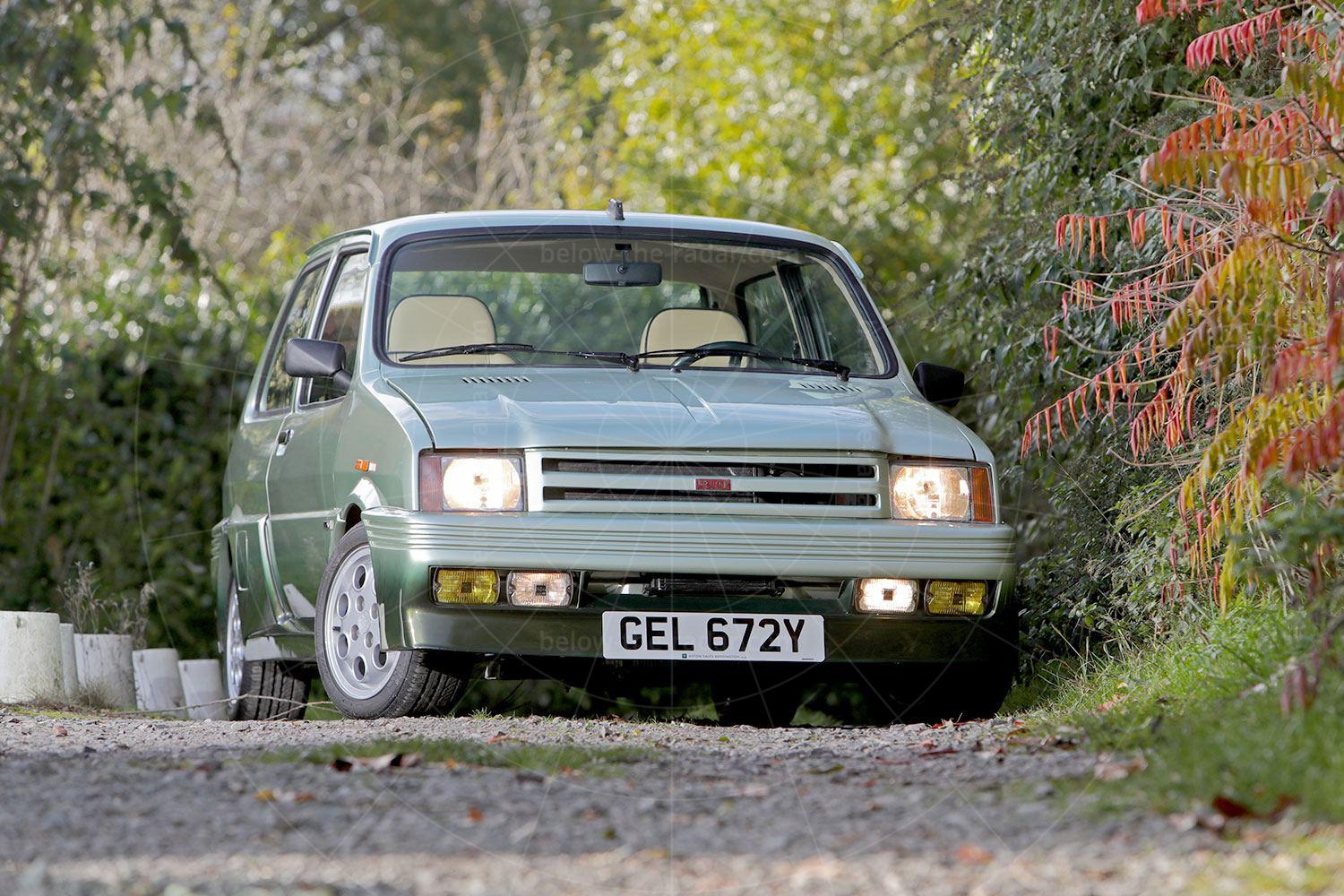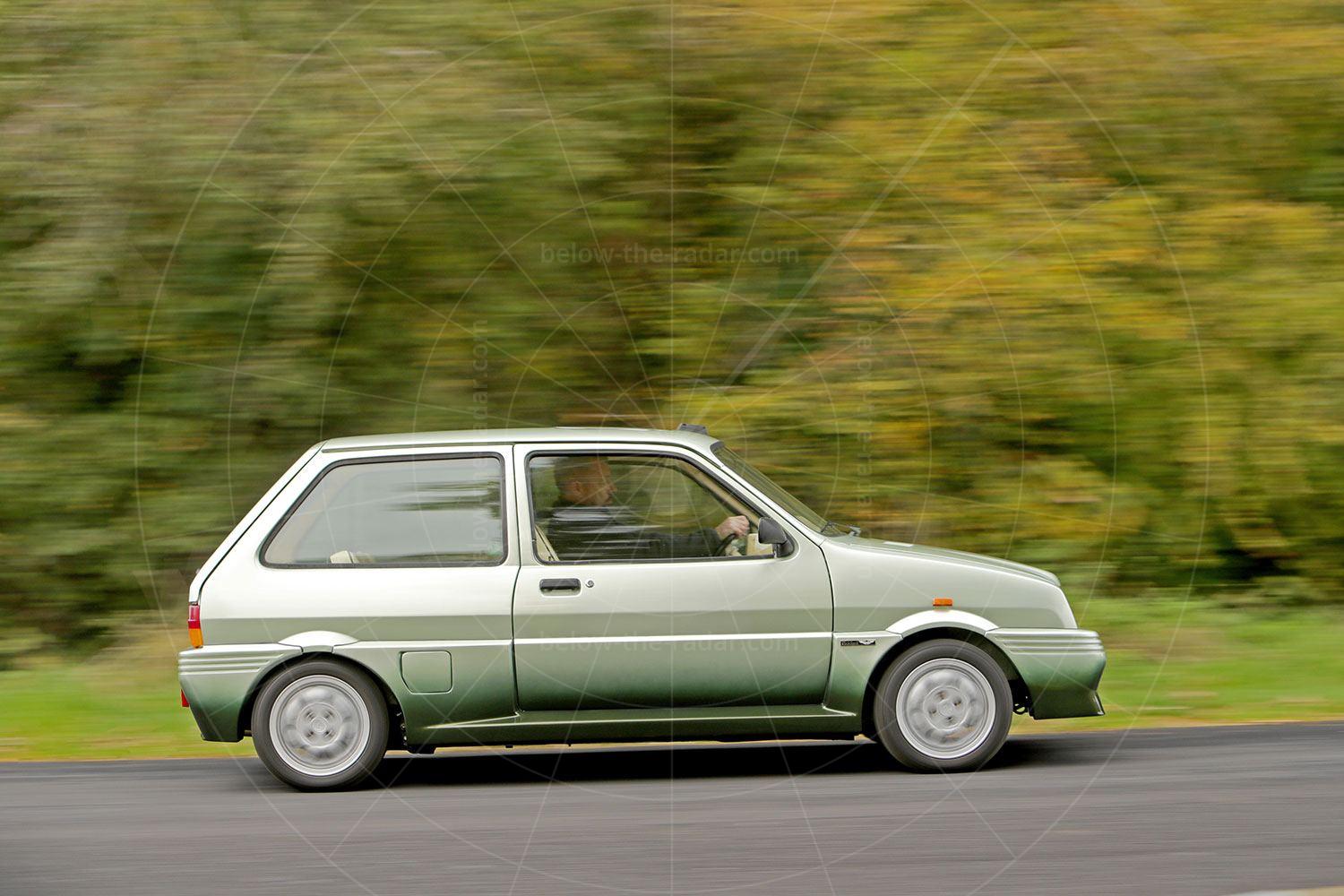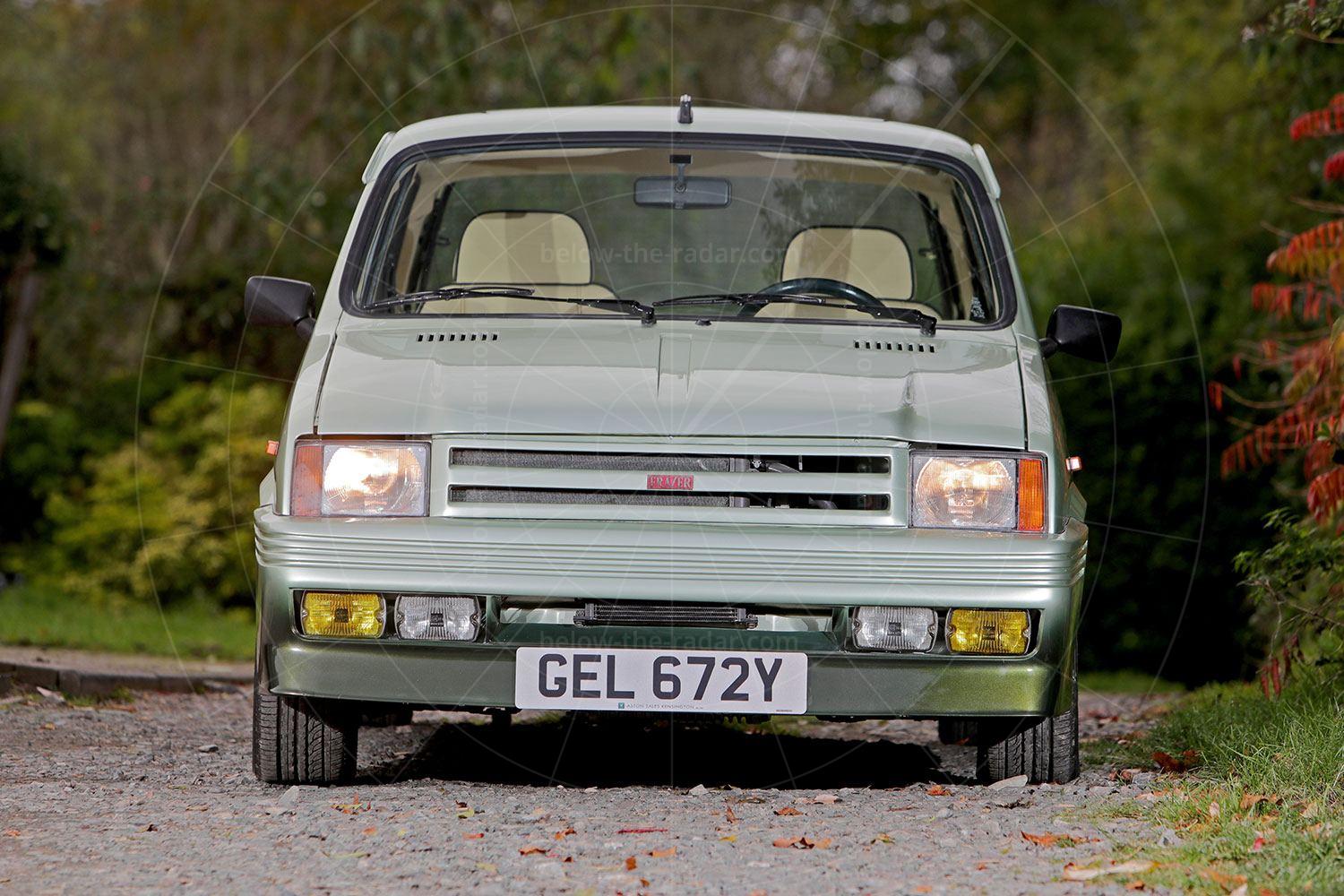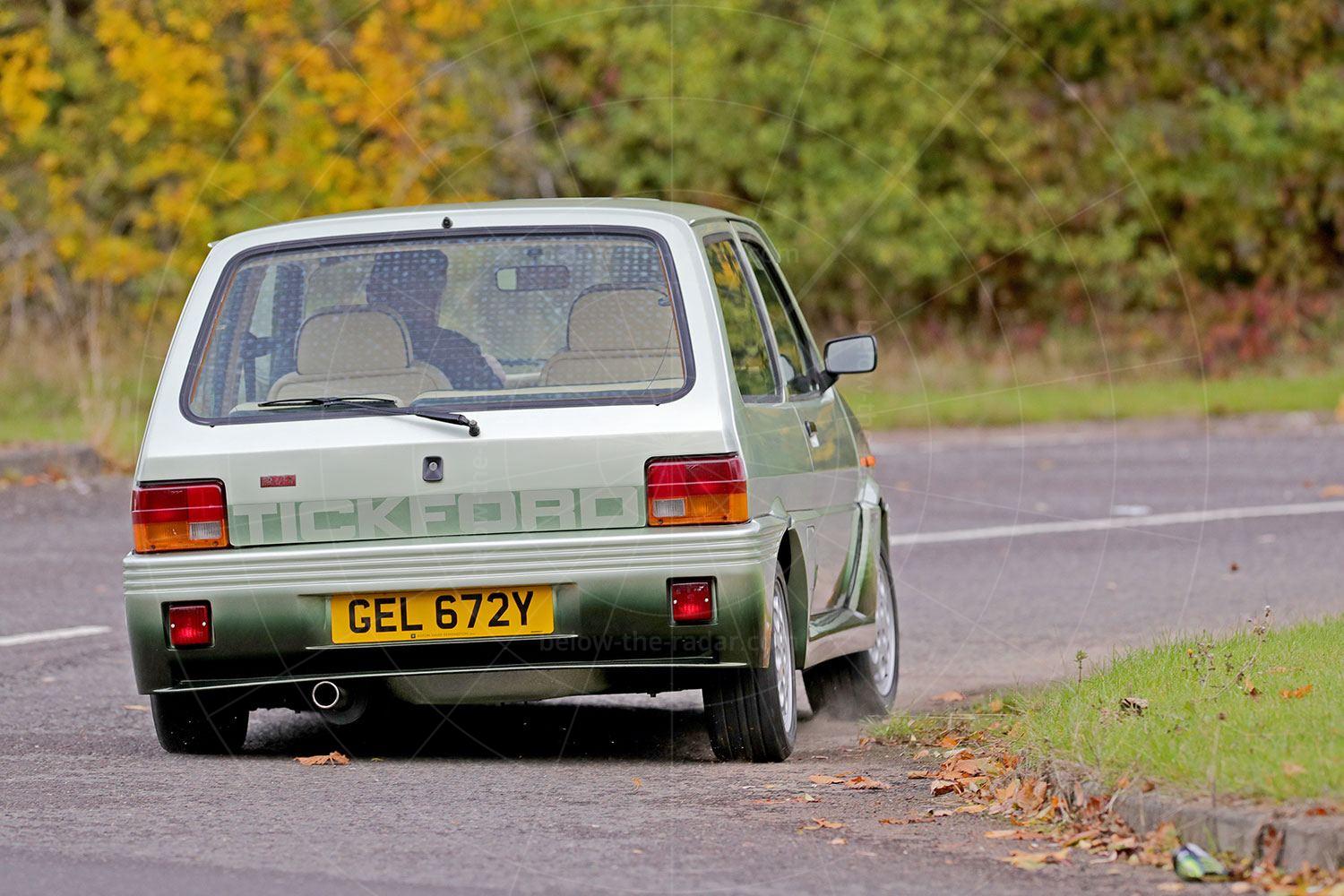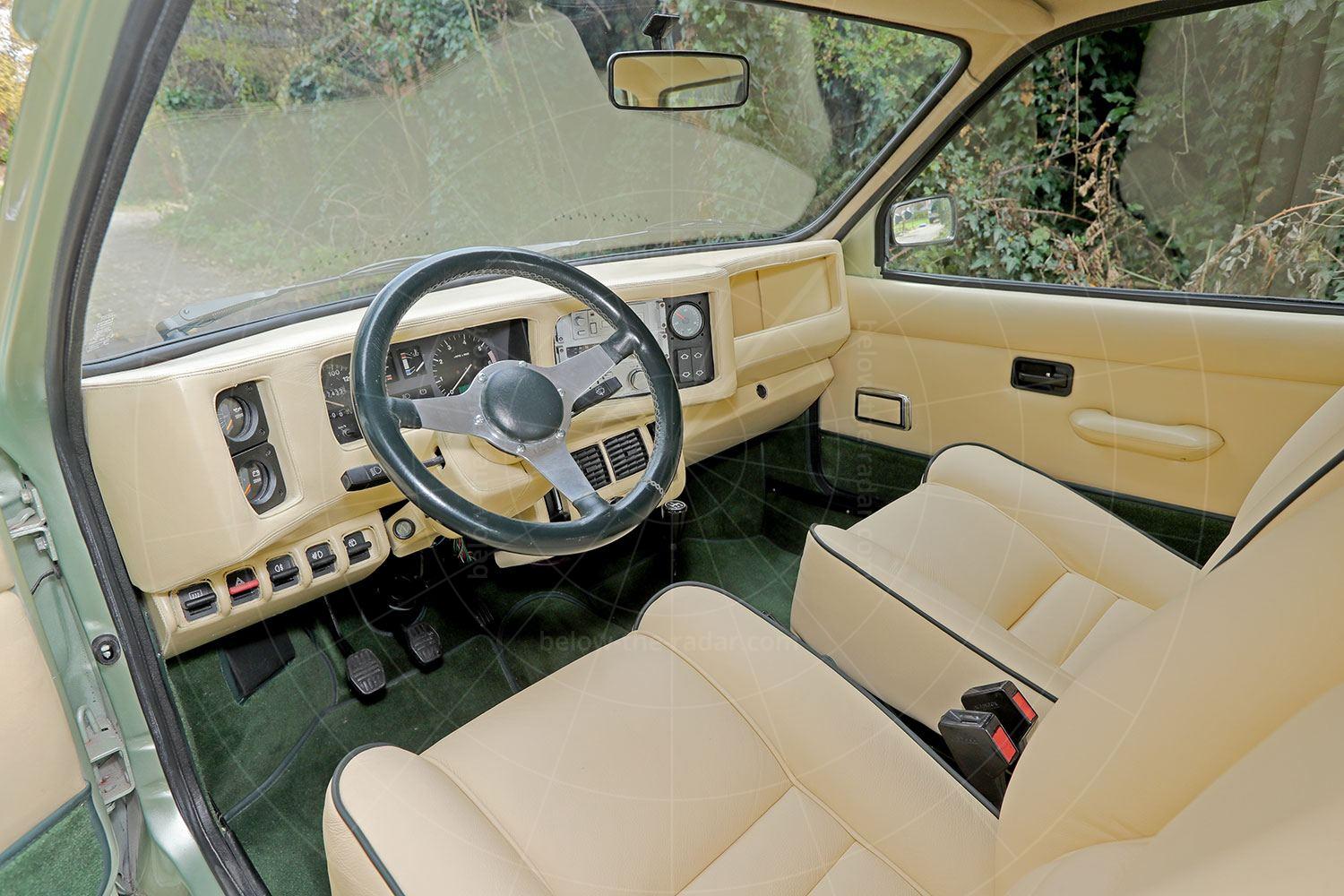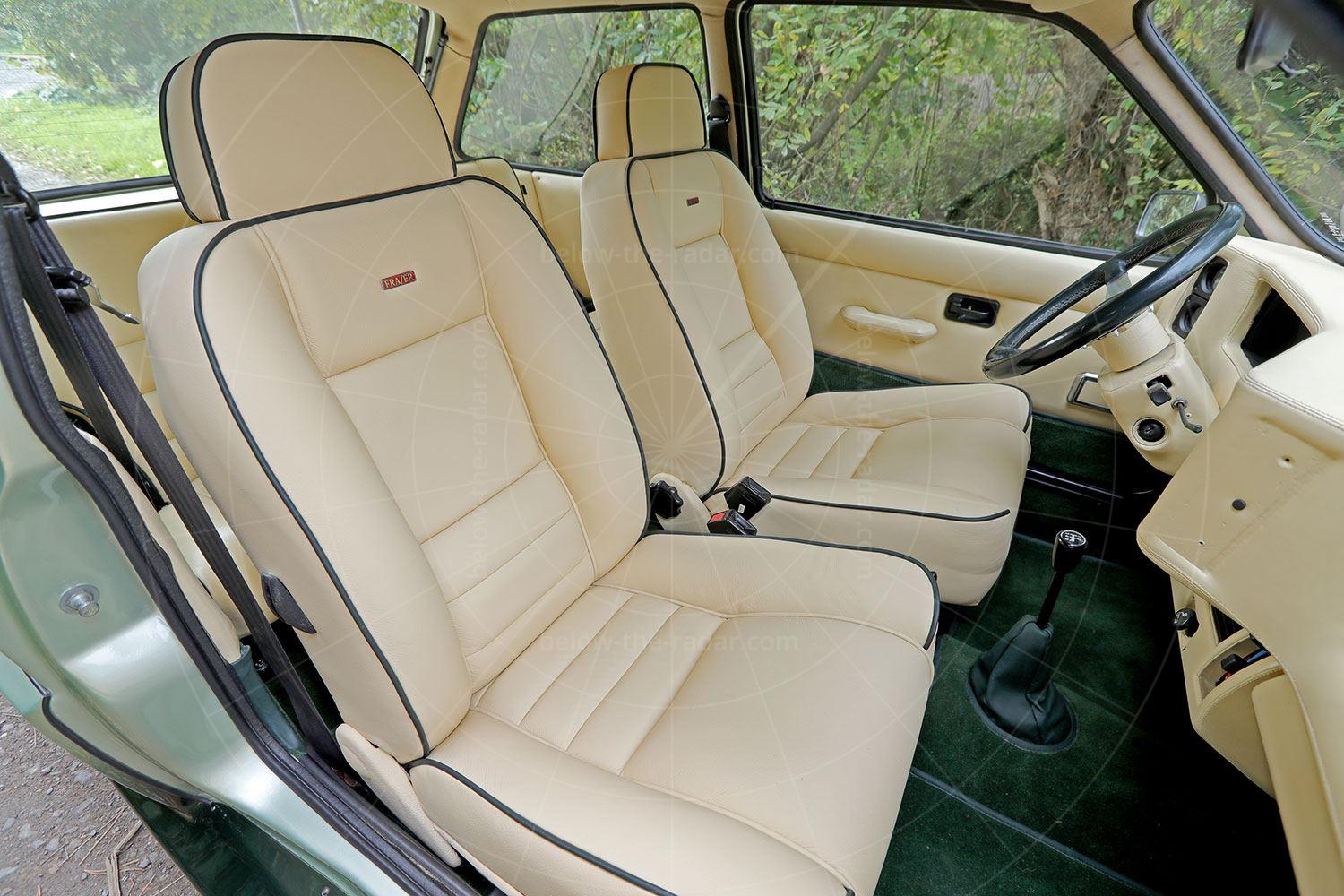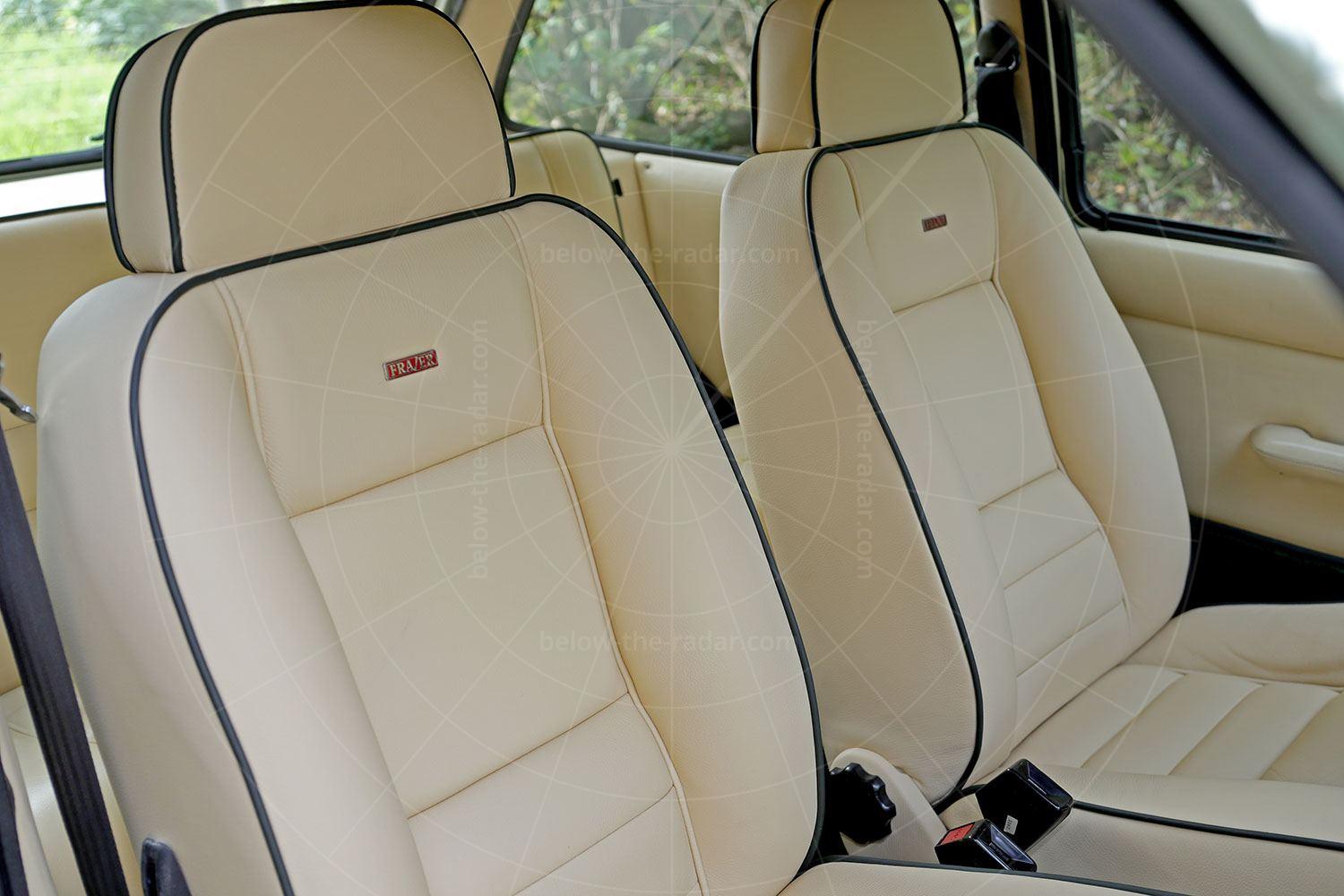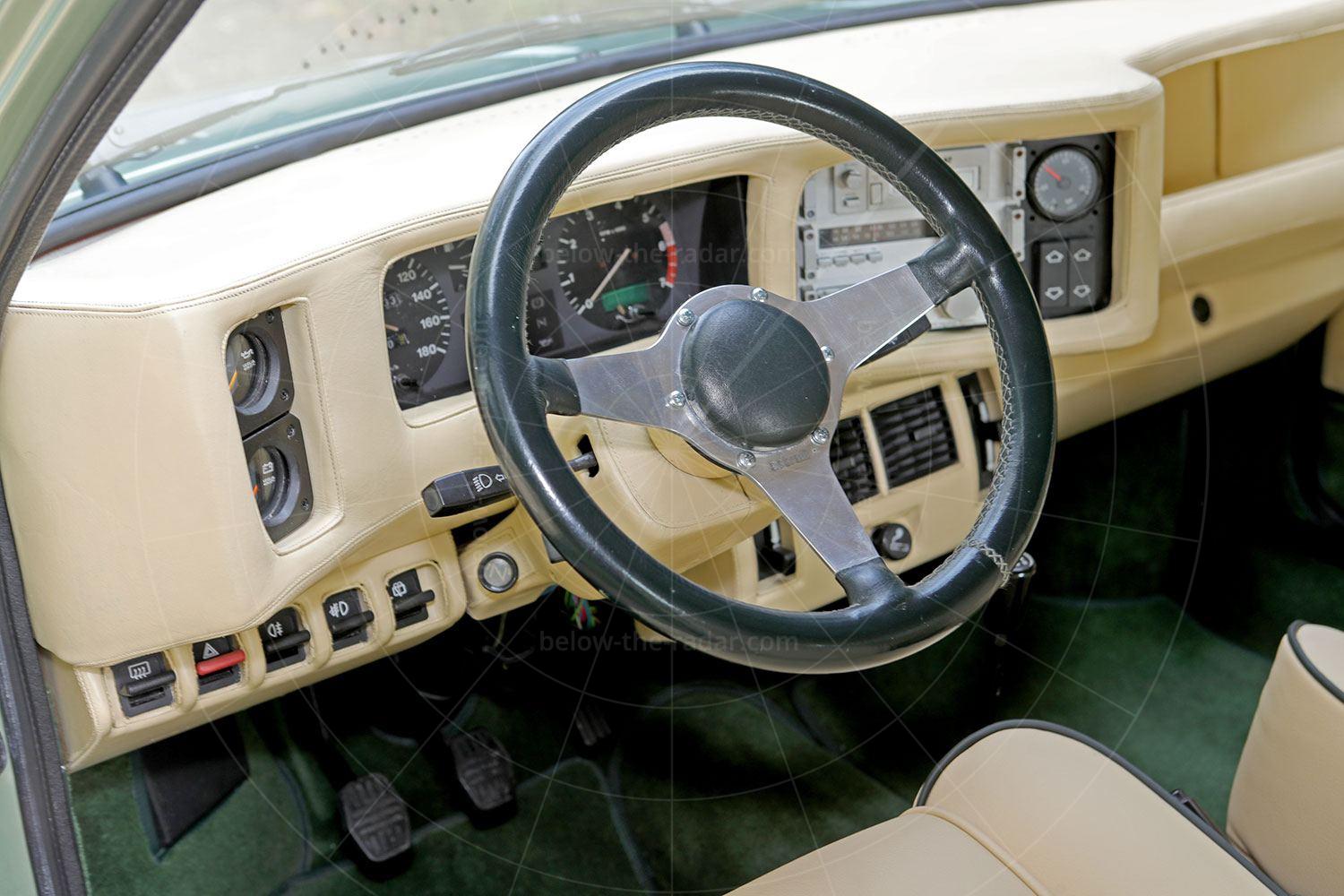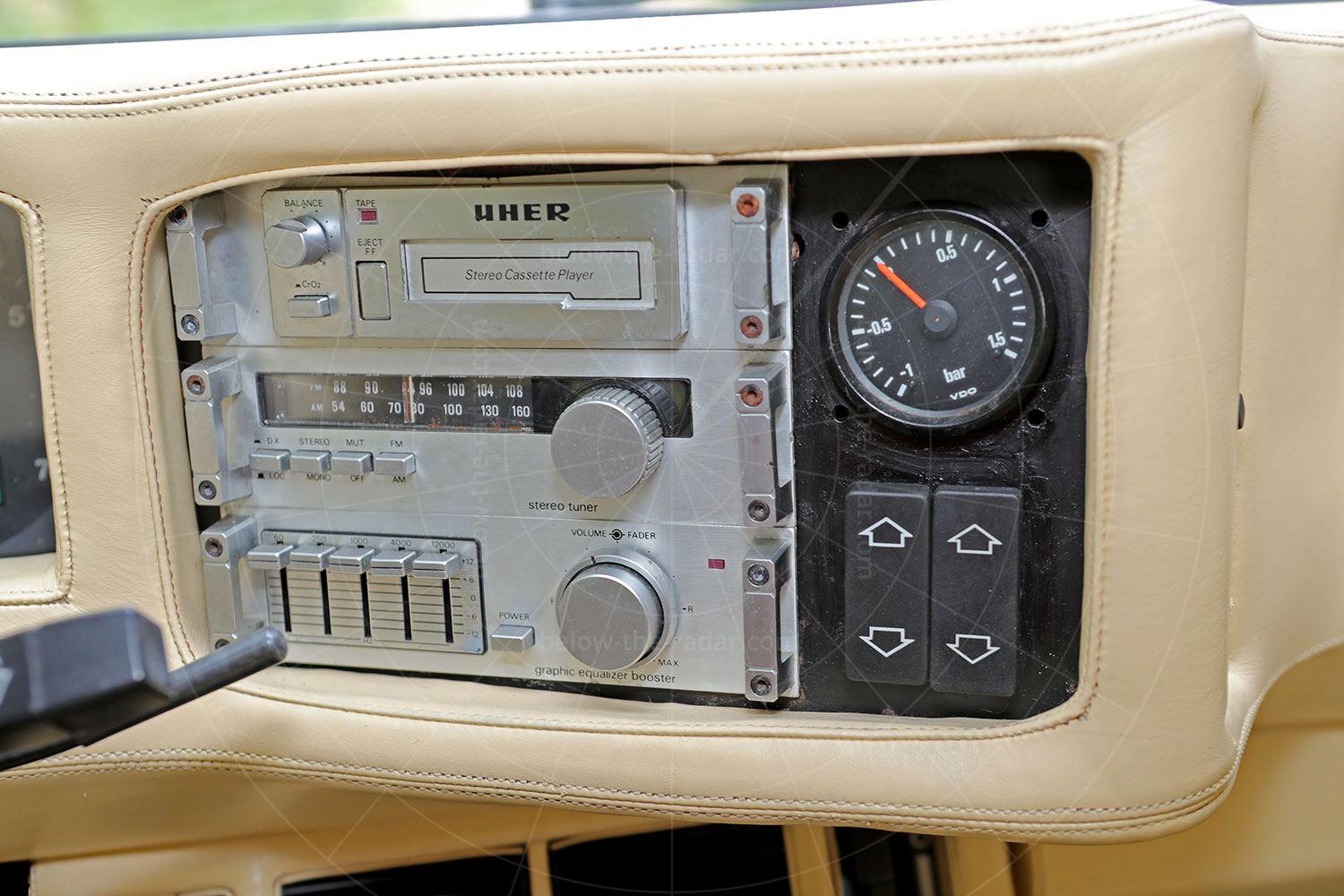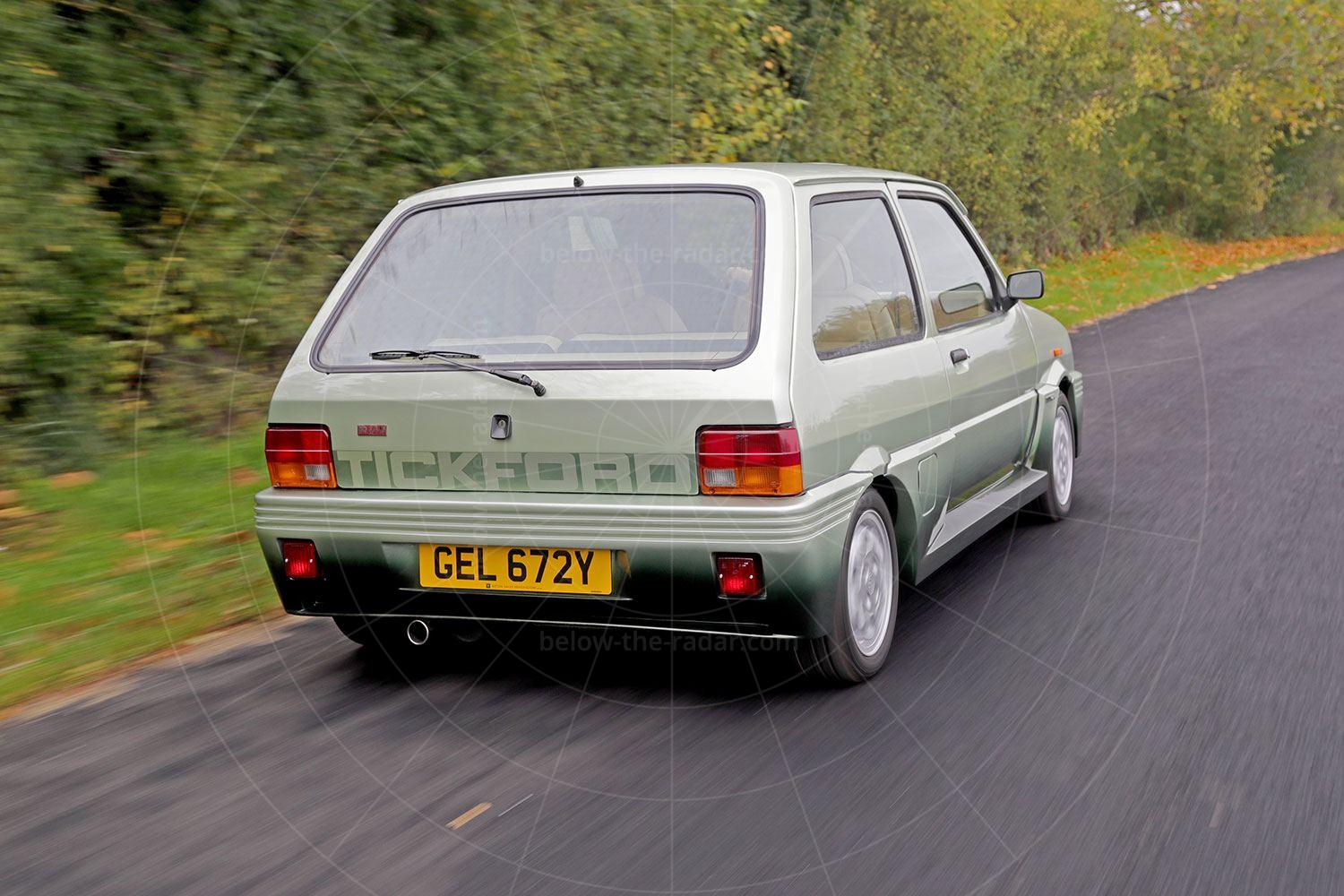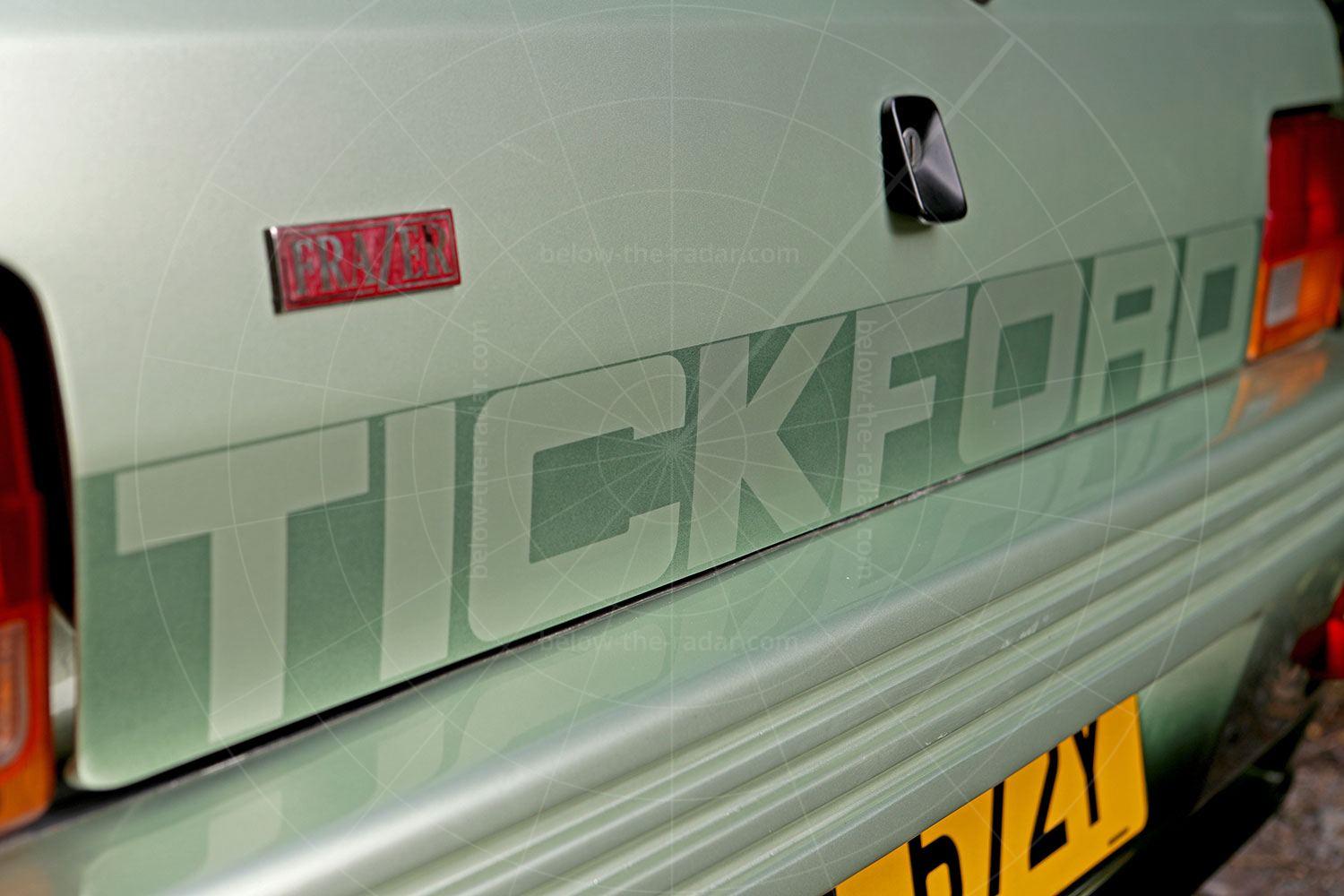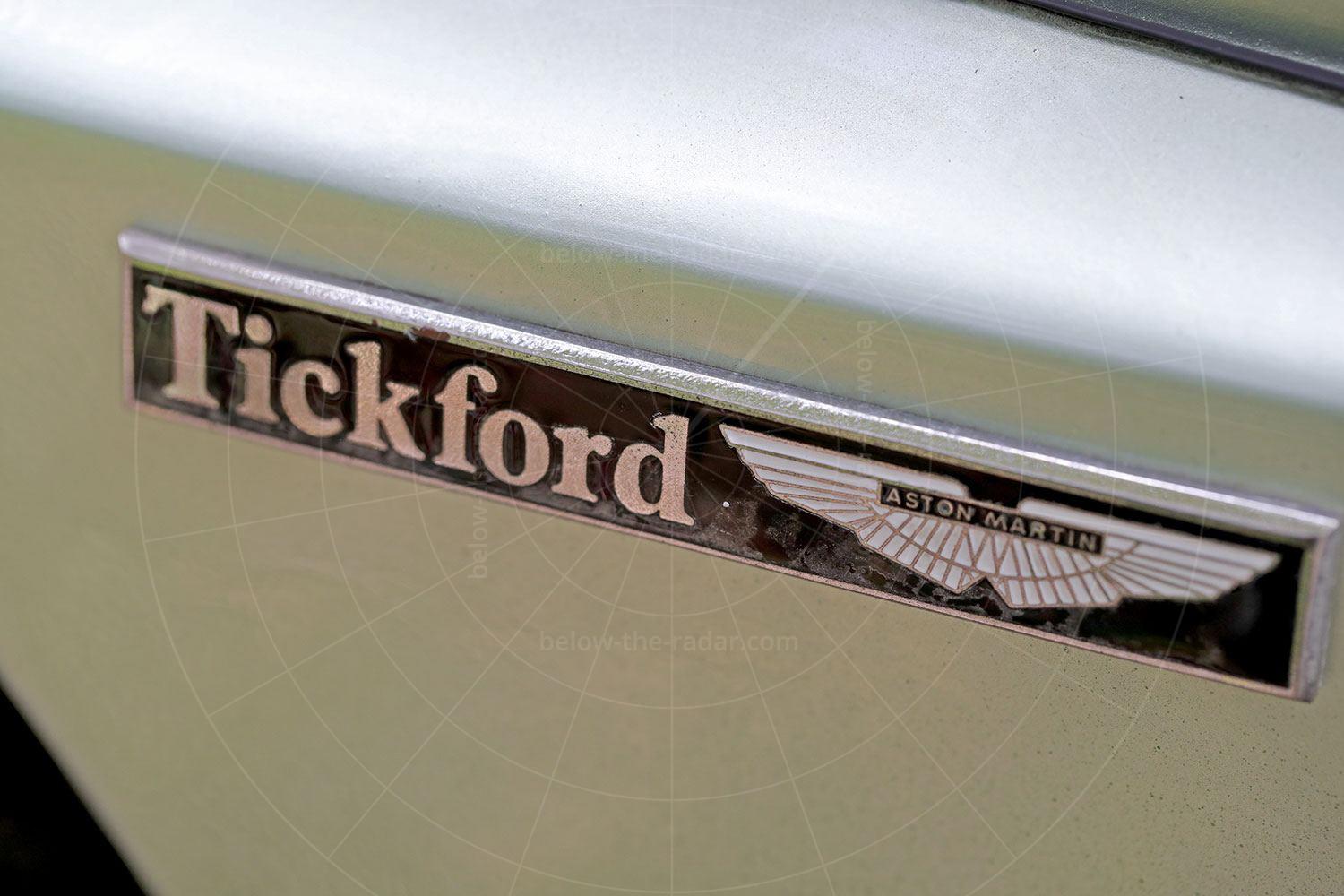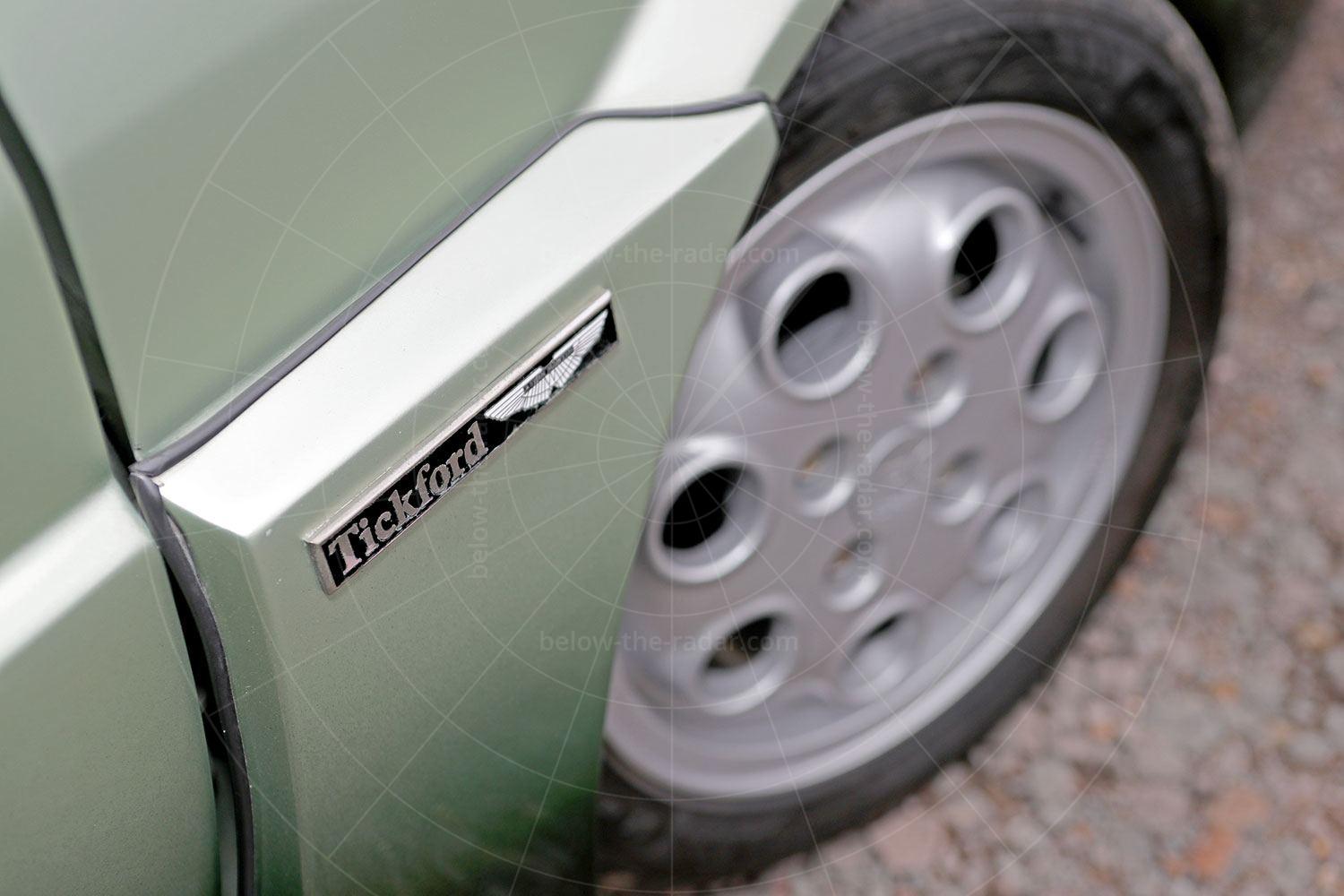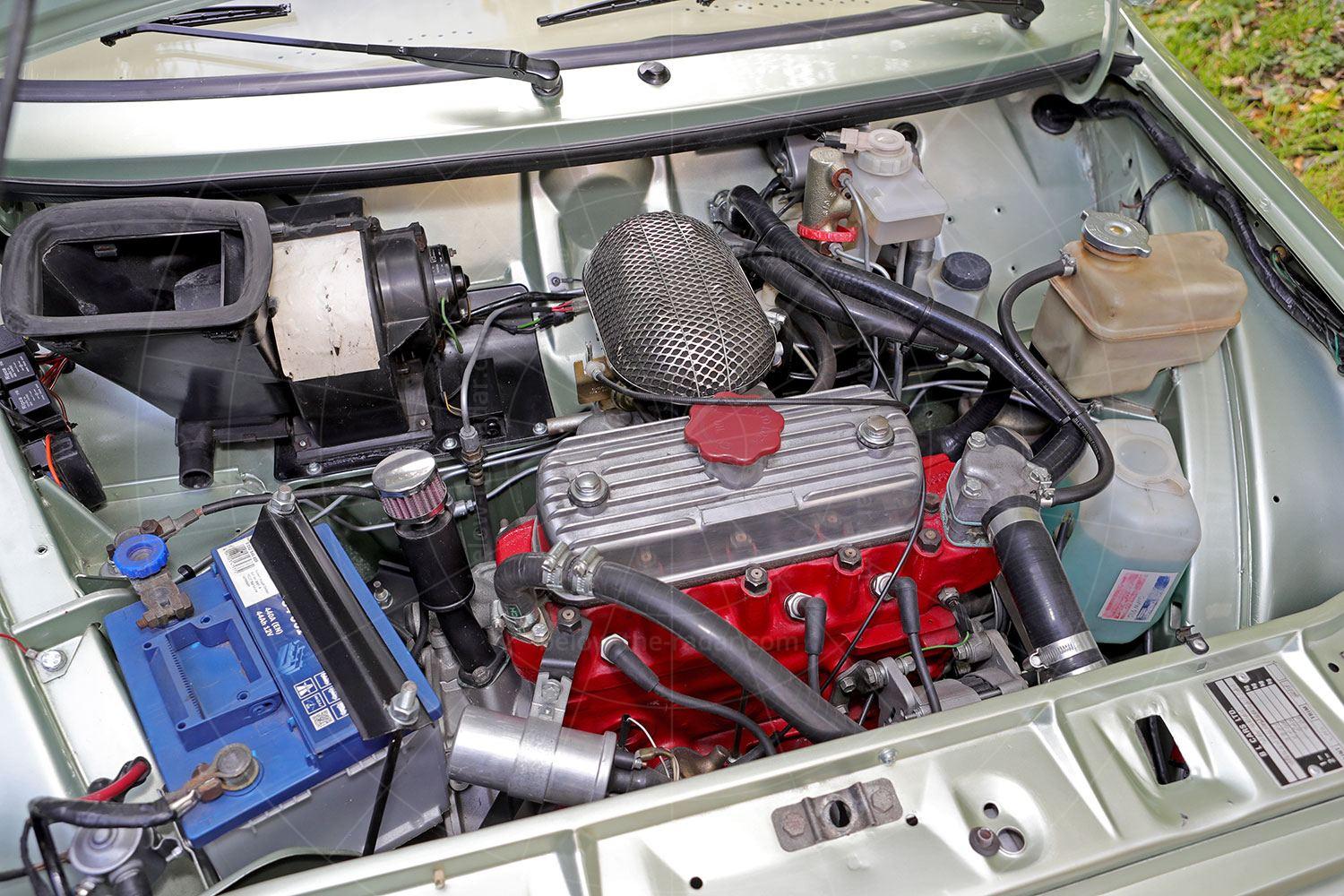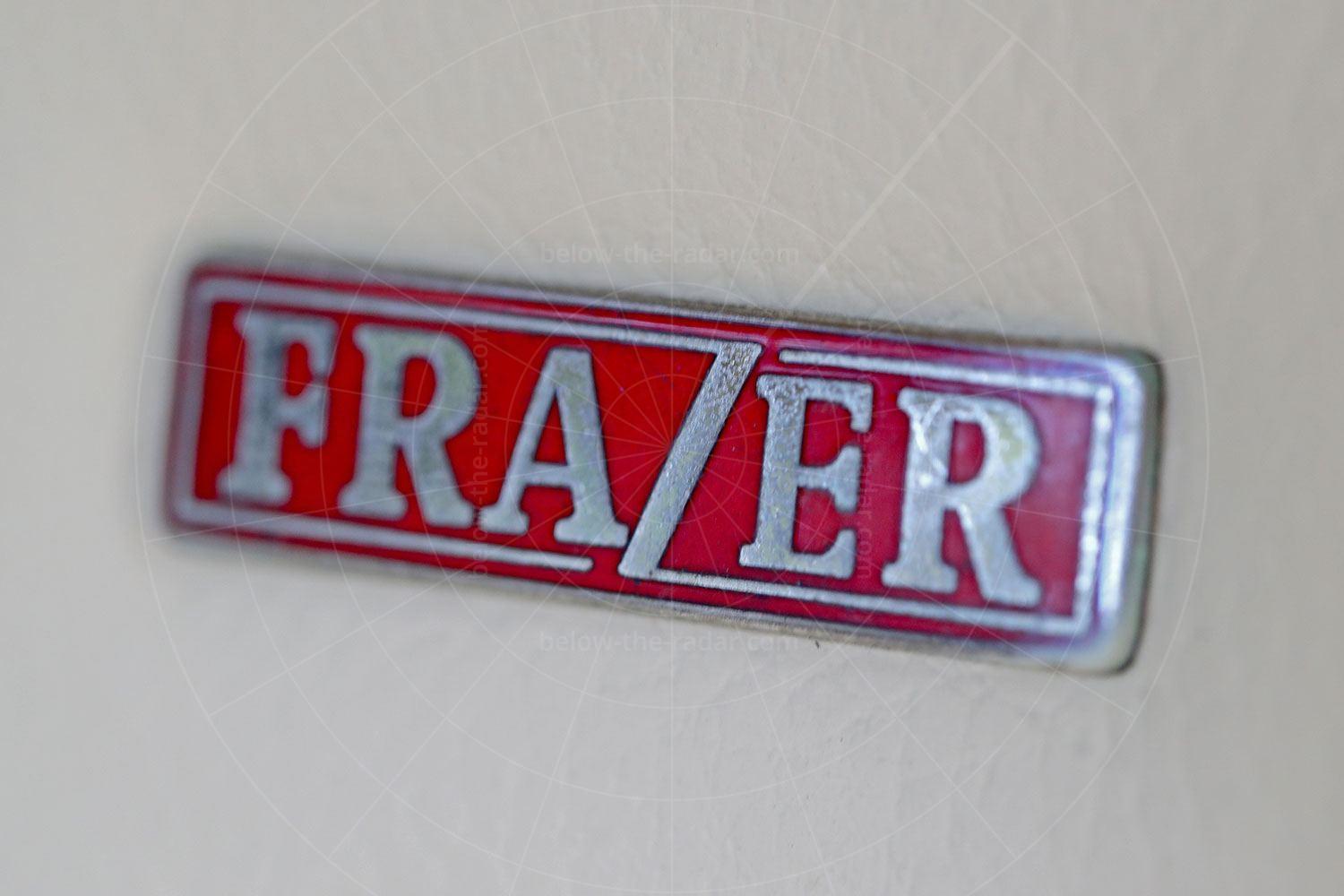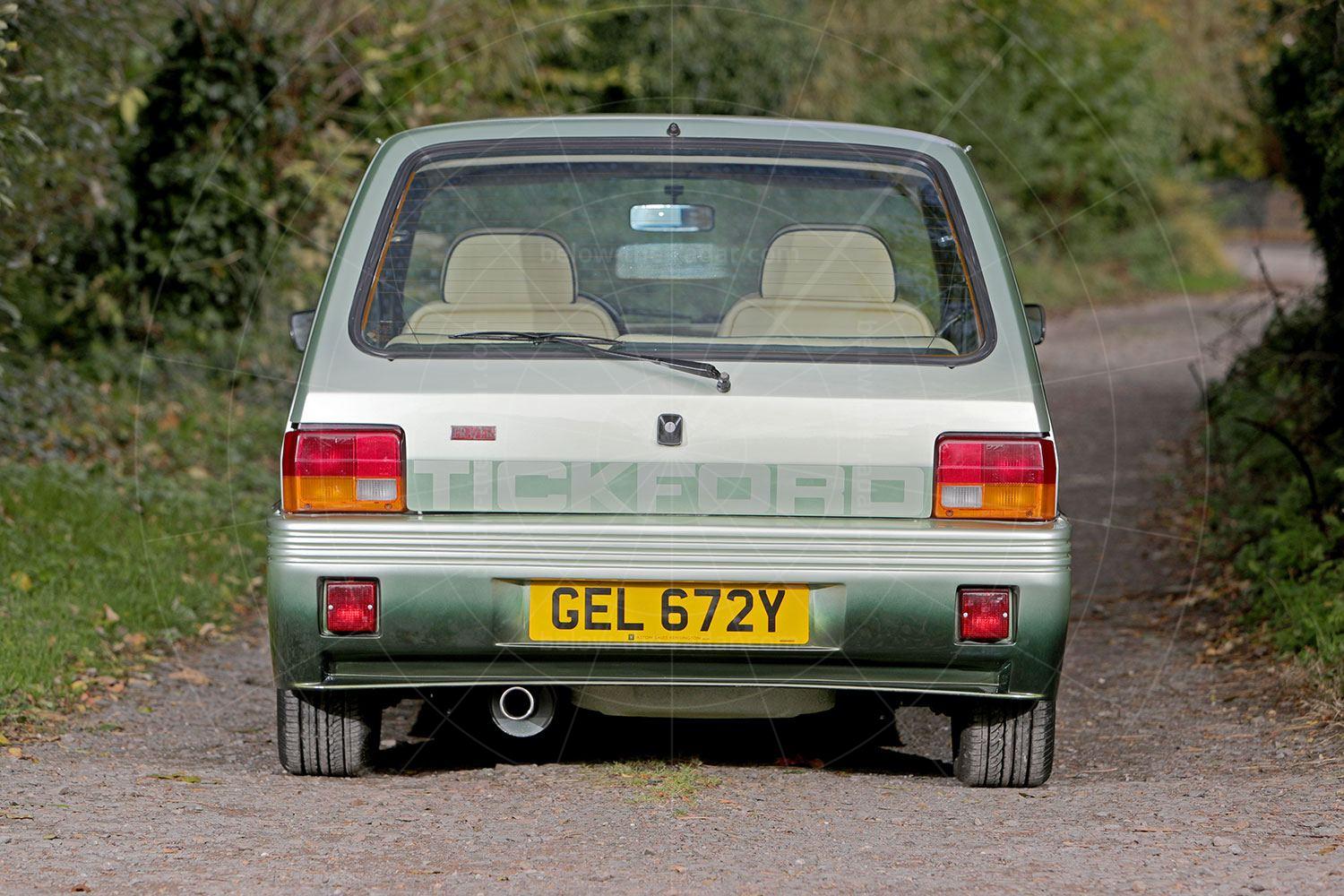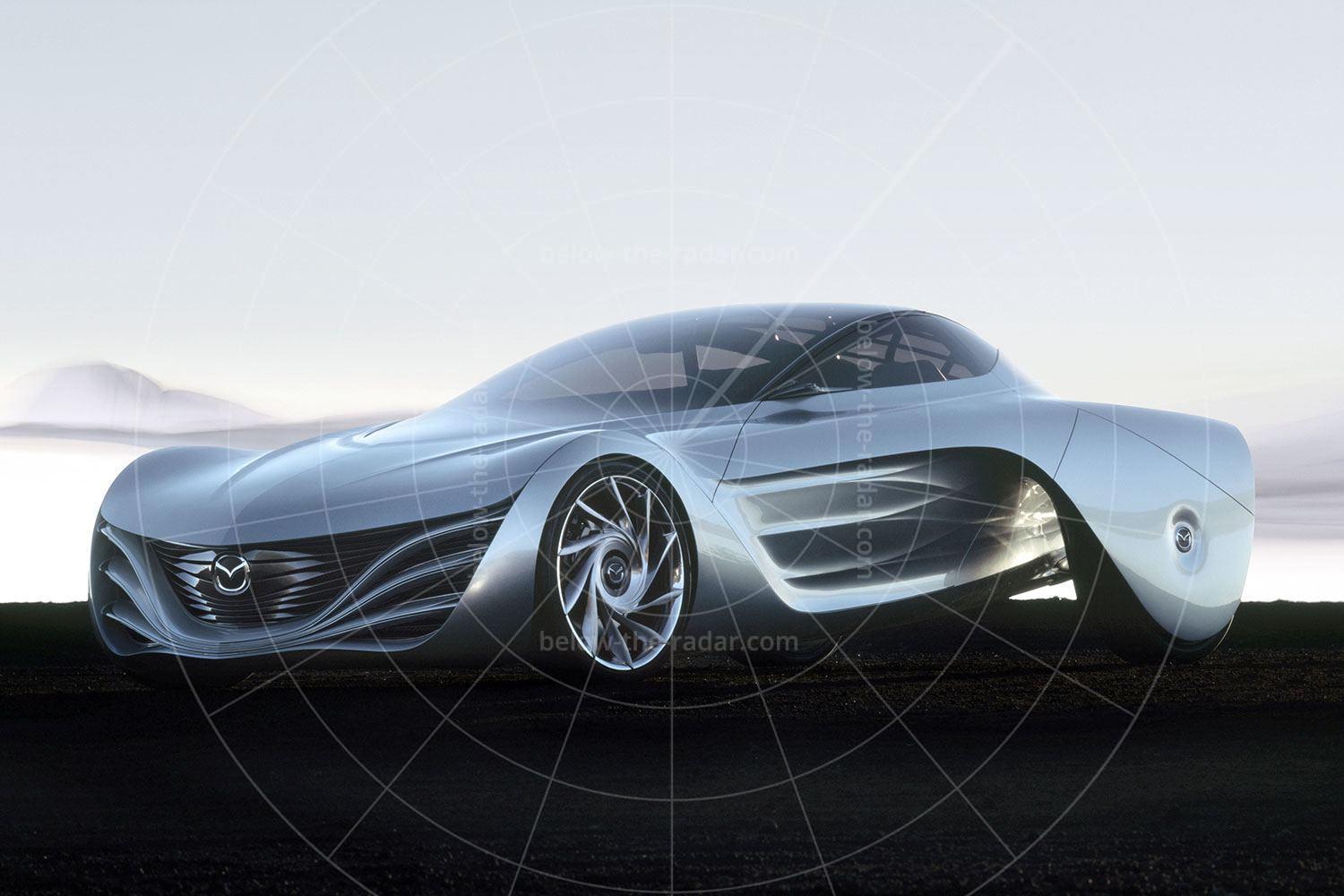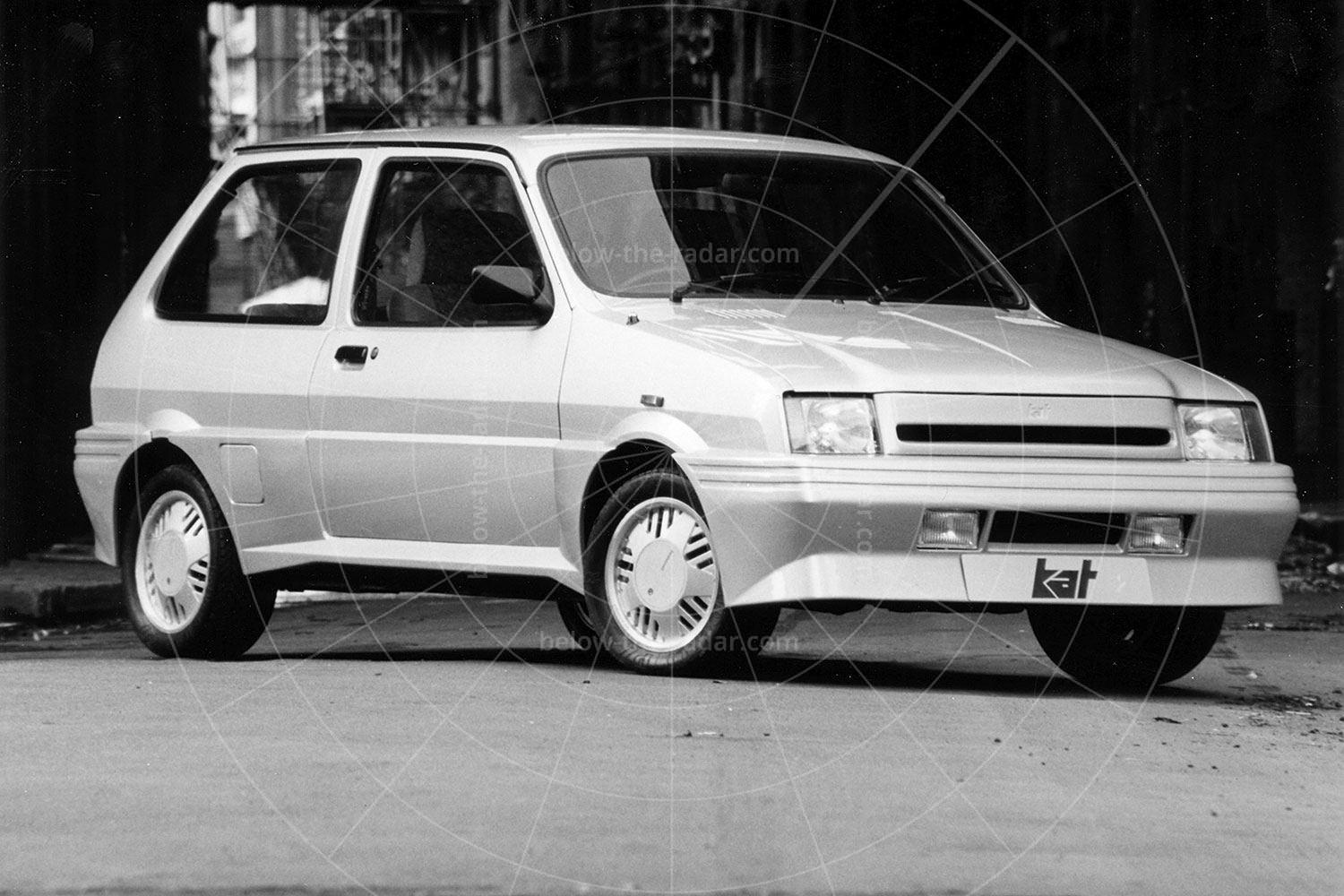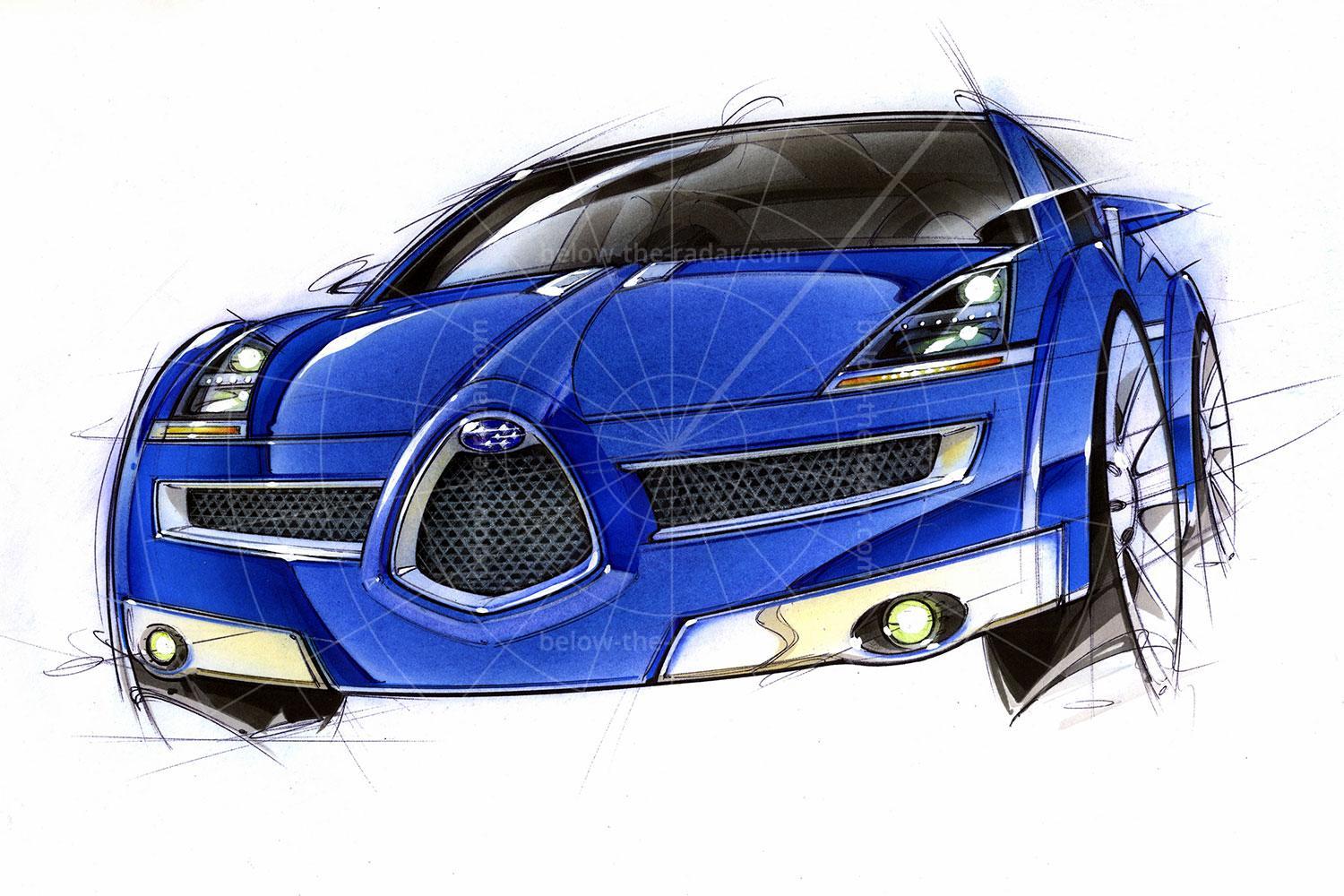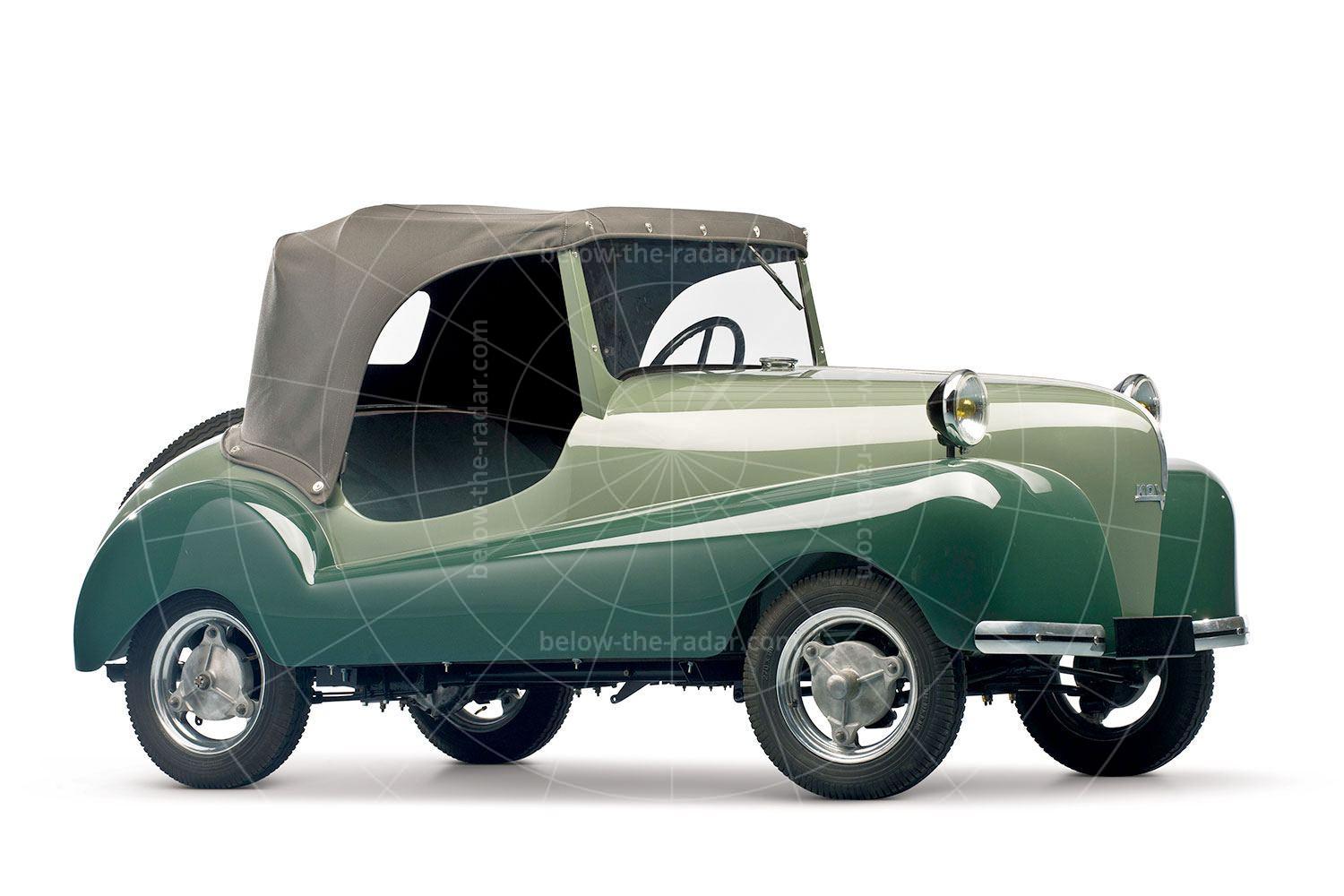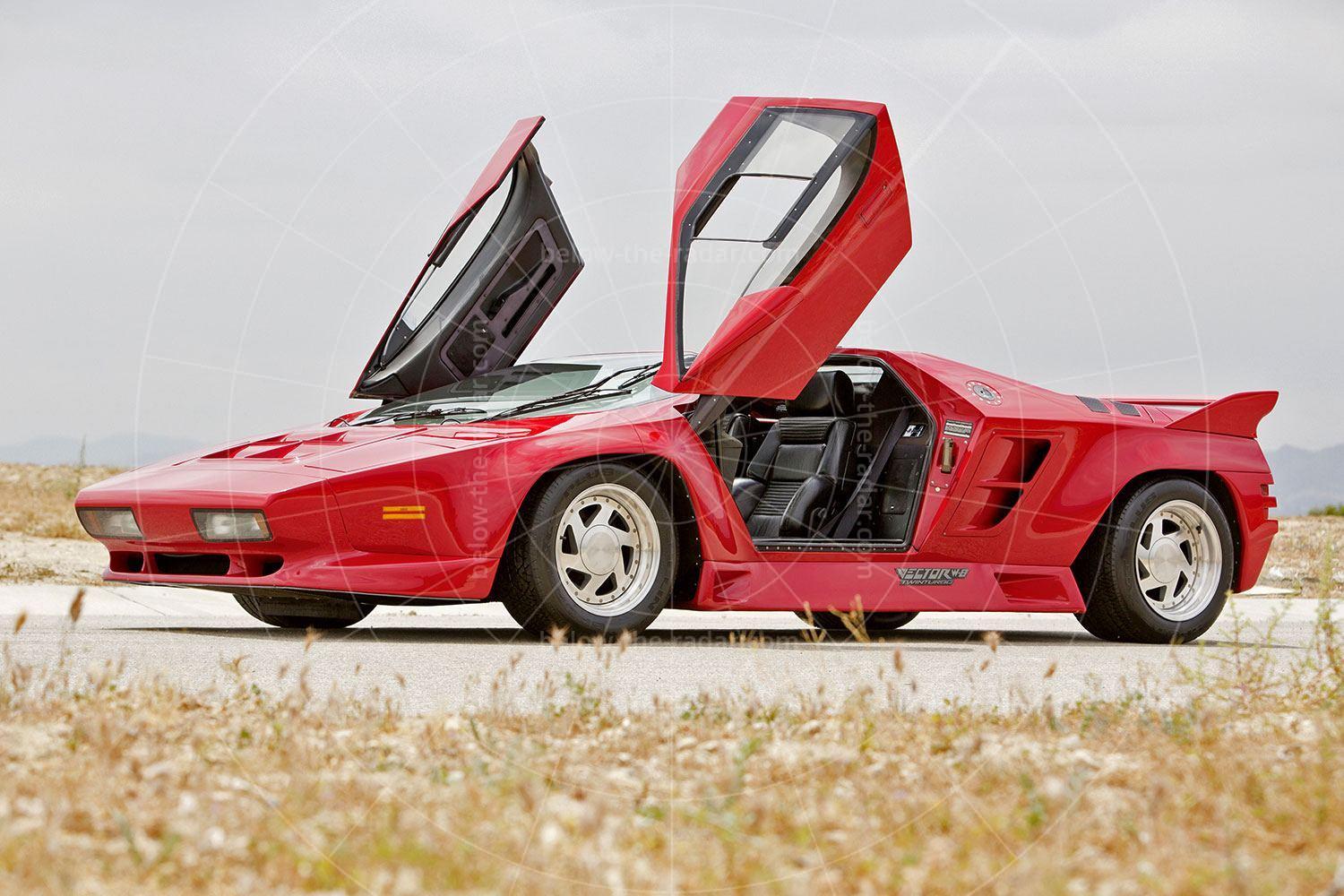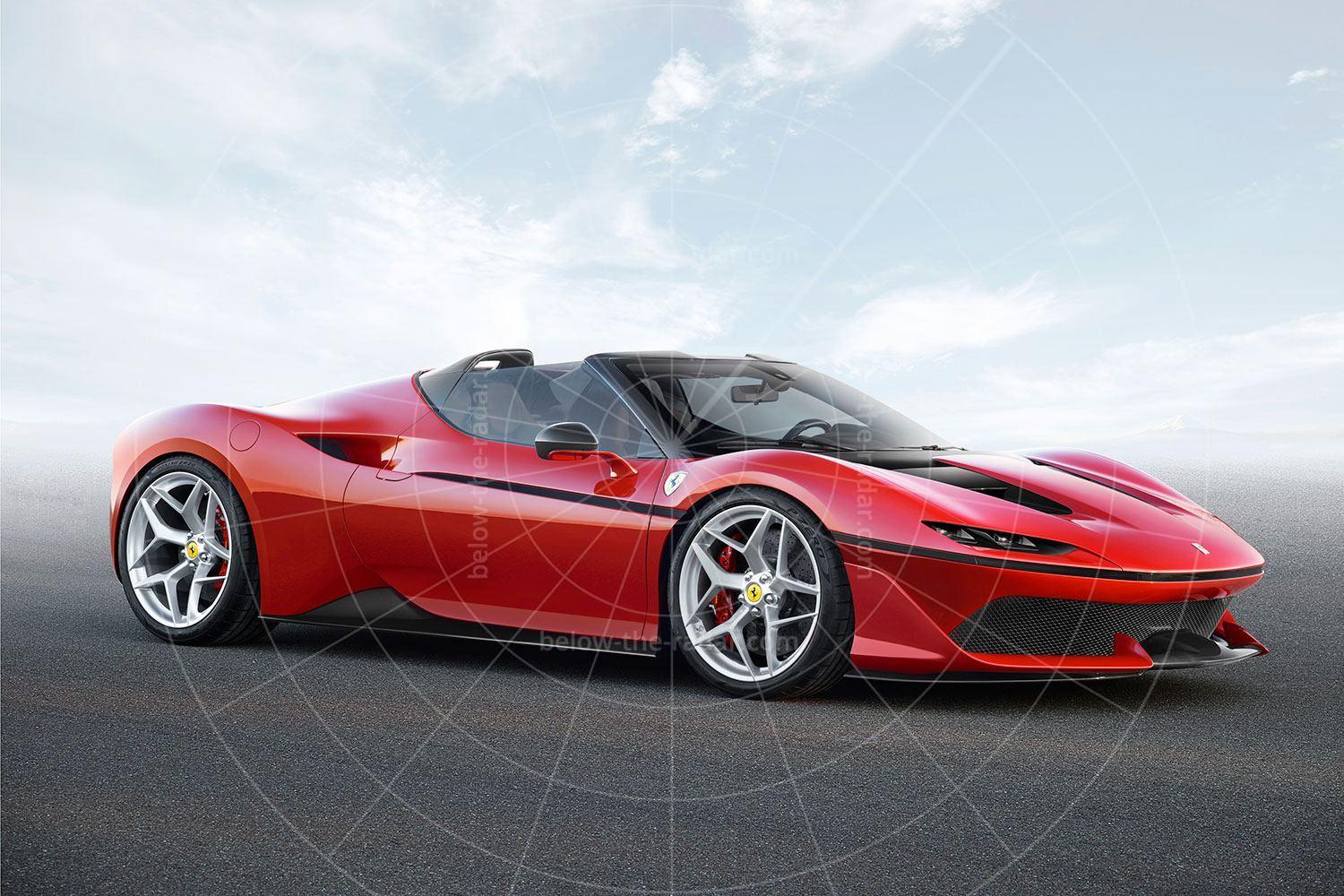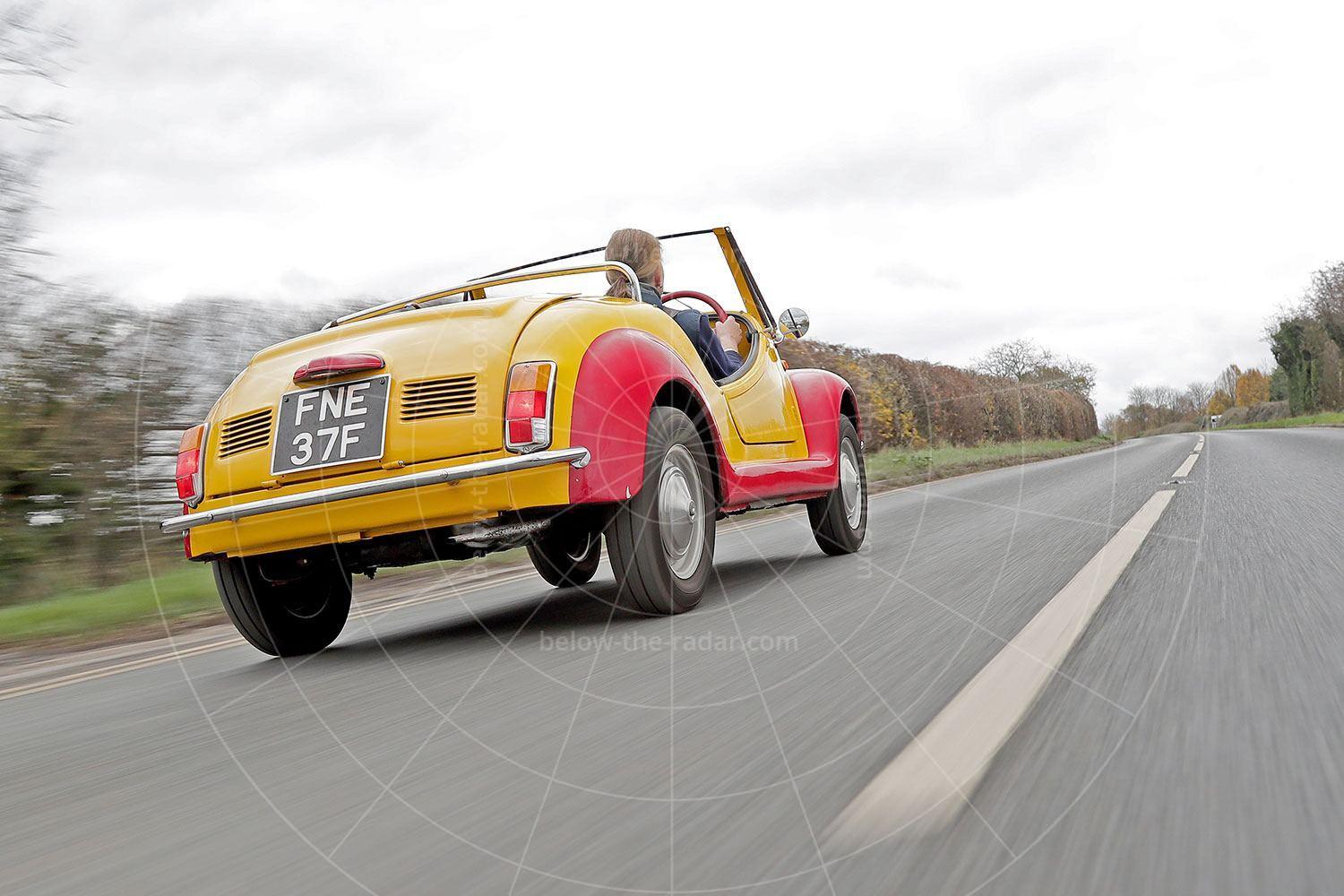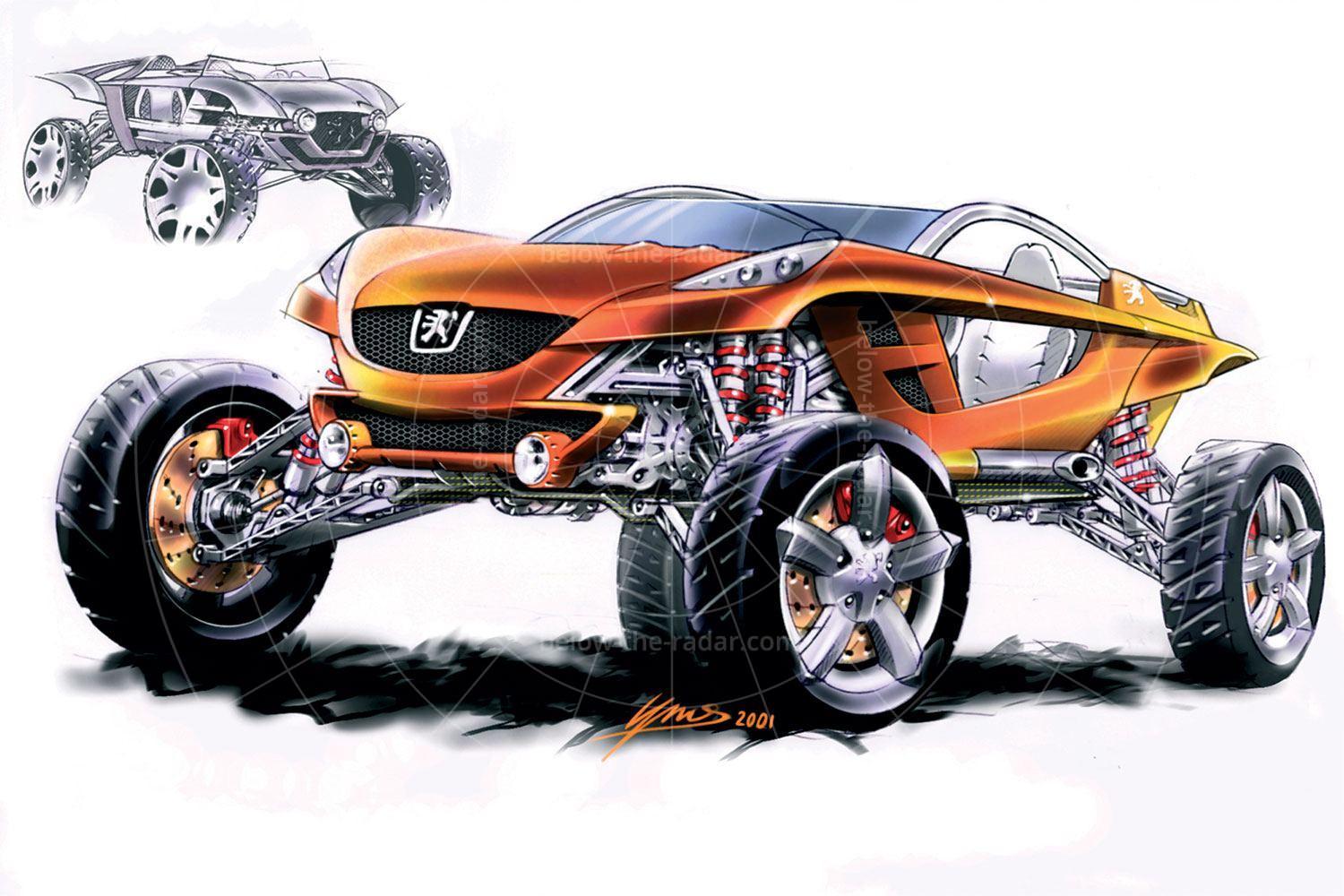Plush superminis are ten a penny nowadays, but back in the early 1980s, small meant basic – as in seriously no-frills motoring. Companies such as Wood & Pickett and Radford made plenty of capital out of this, by tarting up Minis so they had cabins to rival those of contemporary Rolls-Royces, while remaining small, nippy and easy to park around town.
When the Austin Metro arrived in 1980, supposedly to replace the Mini, this boxy hatch was suddenly the must-have small car with its added practicality, proven mechanicals and sharp handling, combined with a comfy ride thanks to the fitment of Hydragas suspension.
For those who wanted a seriously luxurious Austin Metro the only option was to have one built, and several companies sprang up to do the honours, the highest-profile contender being Frazer Tickford – although it wasn't the first. That honour went to the Ogle-designed Metro Lazer which made its debut alongside the standard Metro, at the 1980 NEC motor show in Birmingham.
The man behind the Frazer Tickford Metro was Mike Bletsoe-Brown, the owner of Sywell Aerodrome in Northamptonshire. The airfield was set up by his grandfather in the 1920s and he's still in charge now, but back in the 1980s he spotted an opportunity to create the ultimate Austin Metro. Although the Metros were badged 'Frazer', the development and production work was all done by Aston Martin subsidiary Tickford, which had recently been set up.
Tickford took a Metro 1.3 S and completely gutted it, working through every aspect of the car in turn. The bodyshell was stripped and repainted silver which graduated into an ever-darker grey towards the bottom of the car. A five-piece bolt-on glassfibre bodykit was fitted, with much chunkier bumpers front and rear along with substantial side skirts. The front air dam incorporated four Marchal fog/driving lights, there were Aston Martin enamel badges on the front wings, and emblazoned across the tailgate was the name 'Tickford'. Nobody was going to miss the fact that you'd spent plenty on your luxury city car, especially as the whole ensemble was finished off with 5.5-inch alloy wheels shod with 175/50 VR13 Pirelli P7 tyres.
All of the Metro's glazing was tinted, including the laminated glass sunroof. More impressively was the interior, which was a sea of finest leather, with buyers able to choose whatever colour they wanted. The standard front seats were swapped for much more supportive high-backed items, while the front and rear footwells were lined with deep-pile Wilton carpets. By the time the headlining had been replaced with tweed, the boot retrimmed, some extra instruments crammed in to the dash and a set of Uher hi-fi separates had also been squeezed in, the Metro's kerb weight had ballooned by 200lb (91kg).
Frazer was in danger of having the world's slowest Metro, never mind the least rapid Aston Martin (sort of), so some significant fettling of the running gear was called for. The 1275cc A-Plus engine was treated to a spicier camshaft, a beefier Weber carburettor, gas-flowed manifold and some porting for good measure. By the time the inlet valves had been enlarged, the compression ratio raised (to 10:1) and a tuned exhaust system fitted, the Metro had become a positive powerhouse, with a massive 80bhp on tap to give 100mph and a 0-60mph time of around 11 seconds. Suddenly this diminutive hatch was snapping at the heels of Aston Martin's V8 Vantage. Almost.
Those bigger wheels and tyres helped to get the power down and improve the Metro's stance, but the added fat didn't help the Metro's dynamics at all. Tickford's solution was to fit a rear anti-roll bar plus a stiffer item up front, the suspension camber was increased and the Hydragas pressure was increased to stiffen everything up and to maintain the ride height at the standard level.
Of course all of this came at a (hefty) price: £11,608, of which £7160 was for the cost of the conversion. As Autocar helpfully pointed out to its readers, that was enough to buy a Rover SD1 3500SE or a Porsche 924, with enough cash left over to buy a Citroen 2CV6. Of course none of those cars was a Metro reworked by Aston Martin, but you had to want that pumped-up supermini really badly to part with that kind of cash.
When the Frazer Metro burst on to the scene in late 1981, Mike Bletsoe-Brown talked of 150 cars being converted each year and he aimed to have a 15-strong dealer network in place to service that demand. Frazer even warranted the cars itself, as there was no way that British Leyland was going to do so.
Incredibly and completely unpredictably, Frazer didn't manage to get anywhere near that 150-car target, so Mike Bletsoe-Brown's next move was to sell his Frazer company to Aston Martin Lagonda in July 1982, which bought the rights to the name and assets along with the design and marketing rights. The change of ownership meant the Tickford Metro was available only though London-based Aston Martin Sales.
The change of ownership led to the introduction of a cheaper Tickford Metro in January 1983. This time it was based on the MG Metro which got the bodykit, leather-trimmed dashboard with hi-fi separates, electric windows and a glass sunroof. That lot cost £2706 on top of the standard £4999 for an MG Metro, taking the total to £7505. Buyers who wanted even more though, could pay extra for full leather trim, air-con, cruise control, electric door mirrors and a powered sunroof.
In October 1982 Austin Rover turned up the wick with the Metro, by introducing a turbocharged MG edition. This provided the perfect base vehicle for Tickford's ultimate Metro and sure enough, in April 1983 the Tickford Turbo arrived. The package was much the same as before, but the cost was now £2660 +VAT (£2990) in return for the powered windows, glass sunroof, leather-trimmed dashboard, high-power stereo and the spruced-up exterior. It's not known how many turbocharged Tickford Metros were sold, but the numbers were definitely tiny with just one or two survivors known of.
All in all the Frazer Tickford Metro didn't turn out to be the success that Mike Bletsoe-Brown had hoped, with somewhere between 20 and 26 cars built depending on who you listen to, three of which were left-hand drive. Aston Martin would revisit the tarted-up city car formula in 2012 with the Cygnet, a reheated Toyota IQ – and once again it would get its fingers burned, with sales failing to live up to expectations.

